I’m kicking off 2024 in Flushing, Queens, a neighborhood often referred to as a “melting pot,” or what State Senator John Liu calls “the crusty concentrate at the bottom of that pot.”1 Flushing boasts the largest Chinatown outside of Asia, the third-busiest pedestrian intersection in New York City and the world’s only Angry Birds themed retail store and café. It is one of the country's most ethnically and religiously diverse neighborhoods.
The sidewalks are teeming with commuters and street vendors selling everything from knock-off designer bags and selfie sticks to live frogs and dandelion roots recently foraged from a nearby park.
Because it’s so big and encompasses so many sub-neighborhoods (I see you other Murray Hill), I’m going to concentrate primarily on the downtown and western portions of the neighborhood in this week’s newsletter.
The Flushing Remonstrance
Flushing, originally named after the Dutch city of Vlissingen, was one of the first settlements of New Netherland, though it was largely populated by English colonists escaping religious persecution. In 1645, then governor William Keift granted the colonists a patent (on land they had “bought” from the Matinecock), allowing them to practice whatever religion they wanted. The Dutch were known for their religious tolerance, and Kieft needed bodies to populate his territories. The colonists had trouble pronouncing their new home’s name, so Vlissingen became Flushing.
Fast forward eleven years, and the new Director General of New Netherland, Peter Stuyvesant, had had enough of the whole tolerance thing. Stuyvesant, son of a Calvinist minister, was of the mind that any faiths outside the umbrella of the Dutch Reformed Church were sinful, and he found the many Quakers that had recently settled in Flushing to be particularly repugnant. He also considered the Quakers anti-authoritarian bent a threat to his power.
Stuveyesant began his campaign of anti-Quakerism with a bang by publically flogging and jailing Robert Hodgson, a popular Quaker preacher. He followed that by issuing an ordinance prohibiting any religious gathering that wasn’t part of the Reformed Church, threatening fines and imprisonment for anyone found guilty of harboring Quakers.
In 1657, thirty residents of Flushing, none of whom were Quakers, sent Stuyvesant a letter, the Flushing Remonstrance, requesting an exemption from his newly implemented ban. The Flushing Remonstrance is regarded as the precursor to freedom of religion provision in the Bill of Rights, the first document to make the argument for the separation of church and state.
Stuyvesant was unmoved and had several of the signers arrested. He even went so far as to declare March 13, 1658, a Day of Prayer for the Purpose of Repenting From the Sin of Religious Tolerance. While that holiday never caught on, I found several holidays that are observed on March 13th that don’t champion religious intolerance, including National Earmuff Day, National Open An Umbrella Indoors Day, and Smart and Sexy Day (which I presume is observed internationally).
Quakers continued to assemble in secret until Flushing resident John Bowne opened up his home for services, a gambit that had him arrested and deported to the Netherlands, a strange choice considering he was English. There, he pleaded his case to the Dutch West India Company, who, despite calling Quakerism an "abominable religion,”2 ruled in his favor. Bowne returned to Flushing triumphant.
In 1692, Bowne, who was probably sick of hosting each week, helped build the Old Quaker Meeting House, the oldest house of worship in New York State and the country's second oldest Quaker meeting house.
SO! THIS IS FLUSHING.
Flushing continued to grow through the 18th and 19th centuries, its proximity to water and fertile land made it a good spot for agriculture. It also boasted the first commercial nurseries in North America and was a popular area for wealthy New Yorkers to build homes.
As the construction of new bridges, roads and train tracks connected Flushing to the rest of the city, the population boomed. Between the Civil War and the 1930s, the Halleran Agency of Flushing presided over the majority of the neighborhood’s real estate transactions, and their catchy slogan, “So! This is Flushing,” could be found plastered on billboards all over the city.
Former city council member Dan Halloran, sentenced to 10 years in jail in 2015 for his attempt to rig the city’s mayoral race, is a direct descendant of the Hallerans.3 Dan Halloran is also a pagan, the "First Atheling," or prince, of a neo-heathenist tribe he founded called the "New Normannii Reik of Theodish Belief."
Halloran practices Theodism, a pre-Christian Germanic retro-heathenist religion. You can imagine that had Dan been around in the mid-17th century, he would have had Peter Stuveysant scrambling for his favorite flogging implement, but, as it turns out, the Theods flog their own. After committing an undisclosed act against a female “thrall” (the unfortunate theodic name for new members), Halloran was given the choice of leaving the tribe or punishment. He chose the latter and was “stripped to his waist, strapped to a tree and flogged with a belt 11 times.”
Halloran served half his sentence and spends his days as a technical and recreational scuba instructor today.
TANGRAM
The passage of the Hart-Celler Act in 1965 abolished the immigration quota system that favored immigrants from northern and western Europe, jumpstarting a wave of Asian immigration to the US. Though in the 1960s, approximately 97 percent of the population in Flushing was white,4 the fiscal crisis of the mid-70s led to an exodus, or “white flight,” to the suburbs.
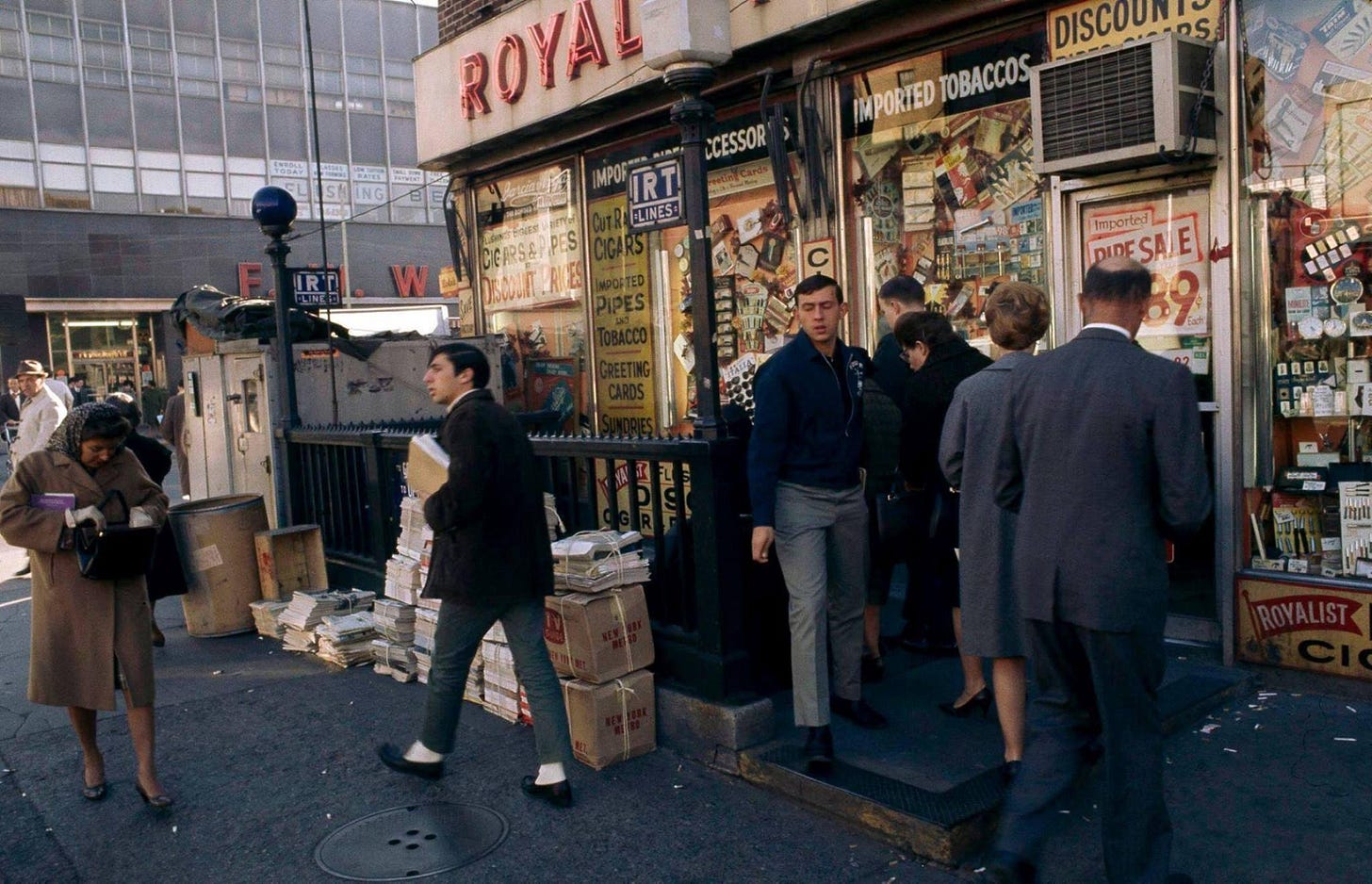
Korean, Indian, and especially Taiwanese immigrants took advantage of the newly vacated apartments and quickly established a foothold in the neighborhood. Since Chinatown in Manhattan was primarily populated by Cantonese speakers, the Tawainese who spoke Mandarin (as well as Tawainese) settled in Flushing instead.
Today, Flushing trails only Williamsburg in the number of new condos built in New York City since 2010. A wave of gentrification is remaking the neighborhood with developments like the 1.2 million-square-foot Tangram, a mall/luxury condominium complex, commanding multi-million dollar prices for apartments with wide plank French oak floors, Italian cabinetry, and floor-to-ceiling double-paned glass walls with privacy tinting.
The influx of transnational capital and rise of luxury developments in Flushing has displaced longtime immigrant residents and small business owners, as well as disrupted its cultural and culinary landscape. These changes follow the familiar script of gentrification, but with a change of actors: it is Chinese American developers and wealthy Chinese immigrants who are gentrifying this working-class neighborhood, which is majority Chinese.5
The Last Days of Whitestone Lanes
There are only a handful of places in the city that harken back to bowling’s glory days before alleys had bouncers, and the only Spritz on offer would come out of a can of Lysol. Today’s posh bowling “lounges” boast of laneside service and offer Black Tie or Executive Collection packages.
Then there is Whitestone Lanes, a 48-lane temple to the 10-pin on Flushing’s northwestern edge. It’s impossible to miss, the name spelled out in giant raised red letters punctuated by a bowling man pictogram. An extended yellow canopy undulates over the building’s rainbow mosaic facade. When you enter through the foyer with its shag-carpeted wall, you are greeted by the familiar sound of pins clattering and the smell of freshly oiled lanes with undertones of yesterday’s fry grease. Until recently, it was the city’s only 24-hour bowling alley.
In 1984, Walter Mondale held a press conference at the alley during the New York Democratic Primary:
Walter F. Mondale emerged from a press conference in the bar of the Whitestone Lanes in Queens one evening during the New York primary to bowl a frame for the cameras. While he threaded his way to a lane, the crowd sent up a loud cheer. It wasn't inspired by Mondale but by the words that came dryly over the public address system: ''The lounge has now re-opened.’’
Mondale rolled a gutter ball. He would go on to suffer the worst electoral college defeat of any Democratic Party candidate in history.
Whitestone Lanes was also the site of a 1975 shooting when a group of men opened fire on a party of three, killing two of them. There was a shooting in 2004 and another one in the parking lot in 2021. Had I been aware of this particular aspect of the bowling alley’s history, I may have thought twice about bringing my kids there for a winter break outing. Still, besides some adjacent aggressive teenage PDA and losing a fingernail, it was great fun.
Sadly, Whitestone Lanes, like the rest of Flushing, is not immune to the relentless churn of gentrification. If a pending rezoning proposal is approved, the lanes will be demolished and a 9-story 415-unit apartment building will go up in their place. So, if you want to experience this slice of NYC history, grab your balls and your wallet - it’s cash only - and make it over to Flushing.
SIGHTS AND SOUNDS
This week’s audio is a mix of Whitestone Lanes and the sounds of Main Street in Downtown Flushing.
FEATURED PHOTOGRAPH
More than fifty busses a day leave Flushing for the Sands Casino in Bethlehem, PA. $20 will pay for your roundtrip fare and earn you a $45 voucher to use in the casino. Hundreds of Flushing residents make the round trip, sometimes twice daily, selling their vouchers for $40 when they arrive and getting the next bus back.
Yeong-Ung Yang’s 2013 photo project, “Bus-kkun,” documents this endless cycle that is, for many, the only way of supporting themselves.
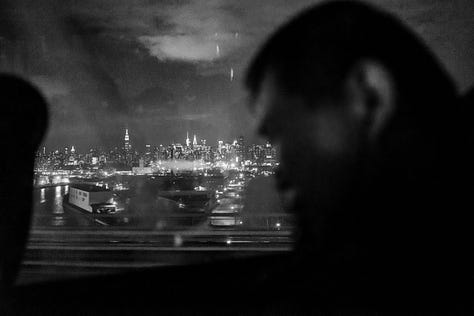
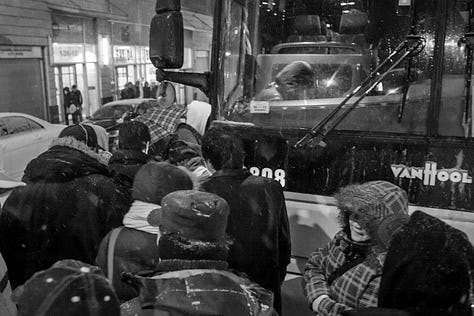

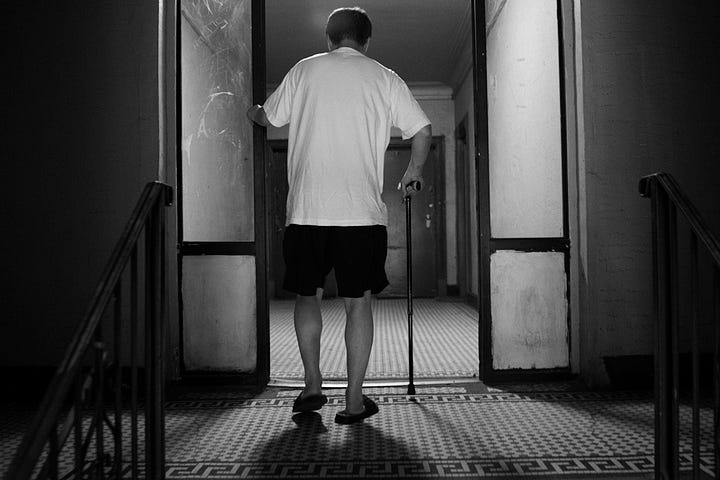
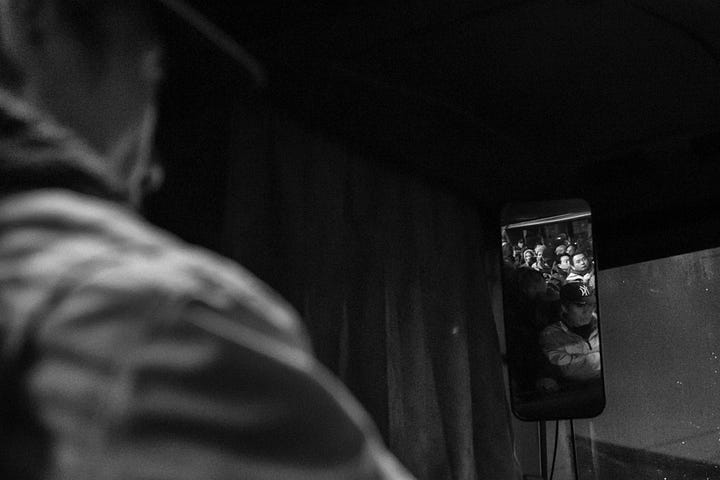
All photos ©️Yeong-Ung Yang
Yeong also produced this excellent short video about the Bus-kkun:
NOTES
I was surprised to learn that two former presidents were Quakers: Herbert Hoover and…Richard Nixon! I was not surprised to learn that there has never been a practicing Theod in the Oval Office.
Unlike Walter Mondale, Nixon was an avid bowler (170 average) and responsible for putting the second bowling alley in the White House in 1973. The first was a gift to Harry Truman, who didn’t even like bowling, and had it moved across the street. According to his physician, Dr. Walter Tkach, bowling “helped improve Nixon’s posture, visual acuity, and muscle coordination. He works up a real sweat.”6 Not an image I really needed.
The Flushing Remonstrance is not only the precursor to the U.S. Constitution's provision on freedom of religion in the Bill of Rights, its also the name of an experimental duo (Catherine Cramer and Robert Kennedy) who compose and perform their own film scores. They perform on February 22 at 9:30 pm at the Nitehawk Cinema in Williamsburg, Brooklyn. I am looking forward to it!
I haven’t even mentioned the myriad of food options in Flushing, a neighborhood justifiably famous for its culinary diversity. As a vegetarian/quasi-vegan, I’m probably not the best person to review the neighborhood’s gastronomical offerings, but if you have any favorites, please drop them in the comments below!
I can vouch for the dosas at Temple Canteen, a cafeteria in the basement of the second-oldest Hindu temple in the United States. A little bit off the main drag but well worth the visit. If you go though, don’t even think about breaking any coconuts.
https://www.nytimes.com/2008/05/02/arts/02expl.html
https://www.qchron.com/qboro/i_have_often_walked/so-this-is-flushing-halleran-said/article_70126072-e88f-538f-a8aa-8cc353cb5ef3.html
Zhou, Min. Chinese: Divergent Destinies in Immigrant New York. New Immigrants in New York. Ed: Foner, Nancy. New York: Columbia University Press, 2001.
https://www.theguardian.com/us-news/2020/aug/13/flushing-queens-gentrification-luxury-developments
https://www.beaconjournal.com/story/lifestyle/2016/02/15/local-history-richard-nixon-bowled/10606294007/

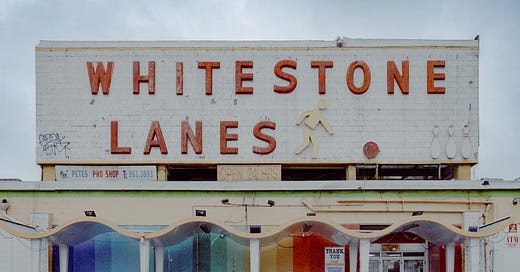


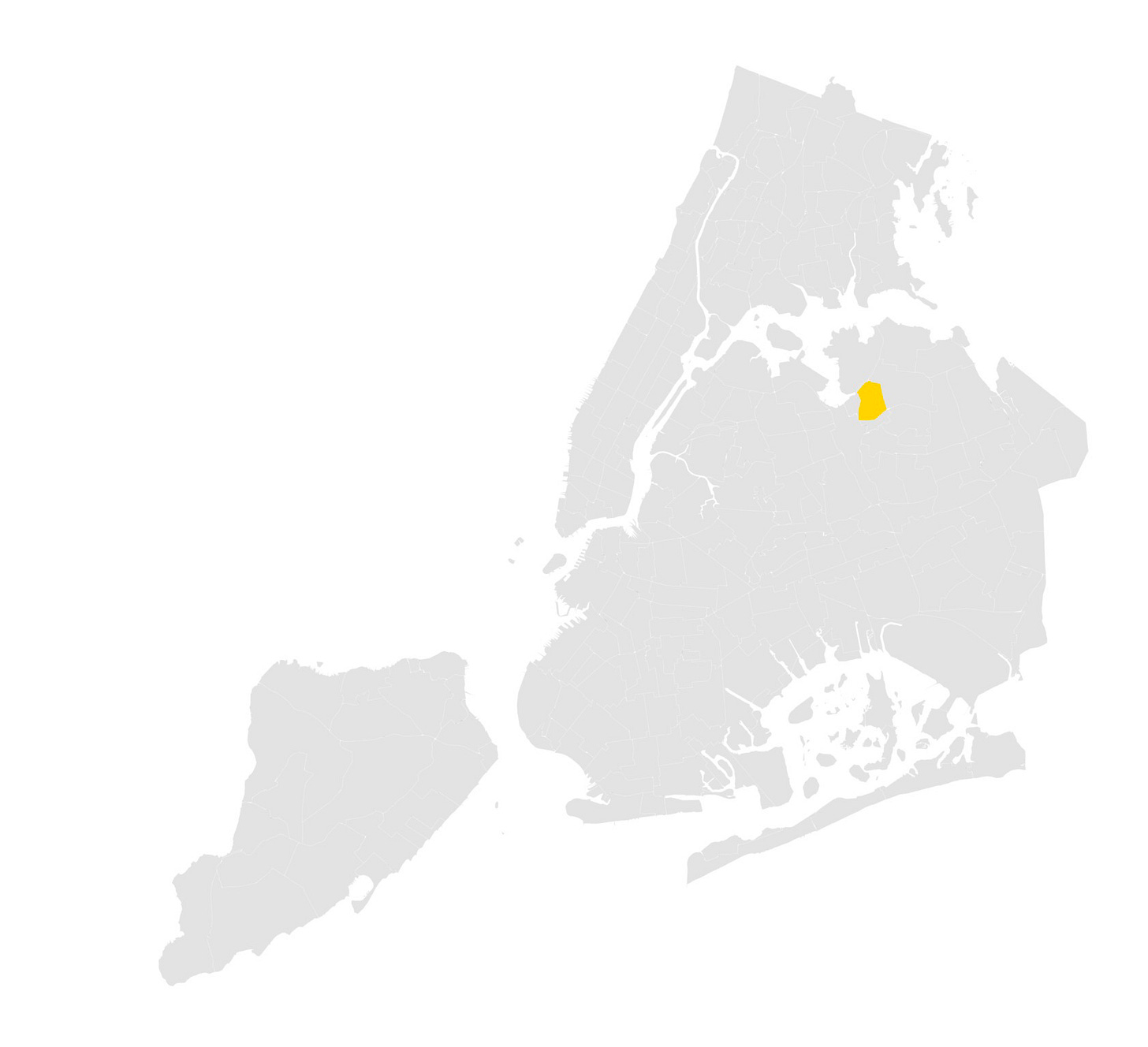
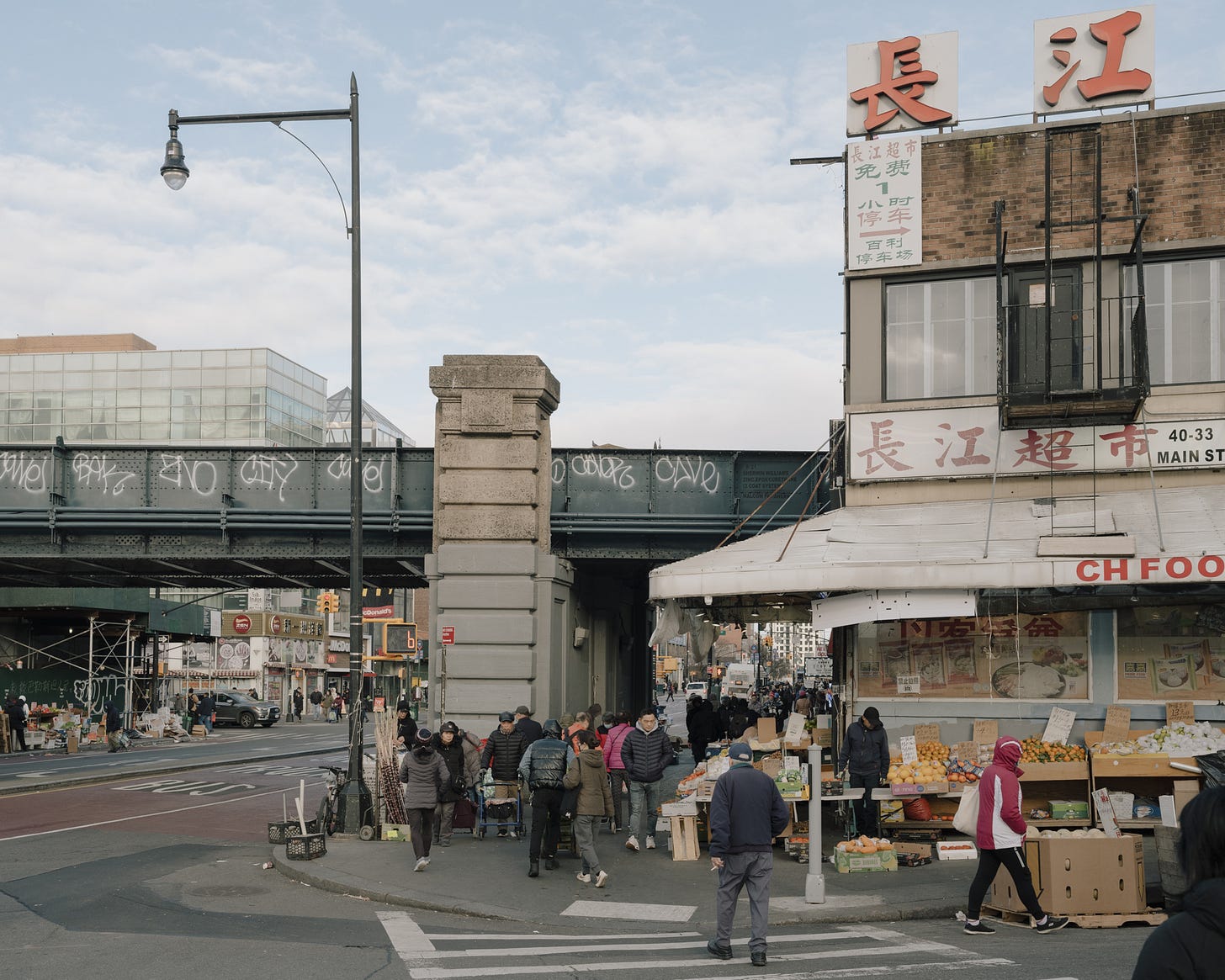

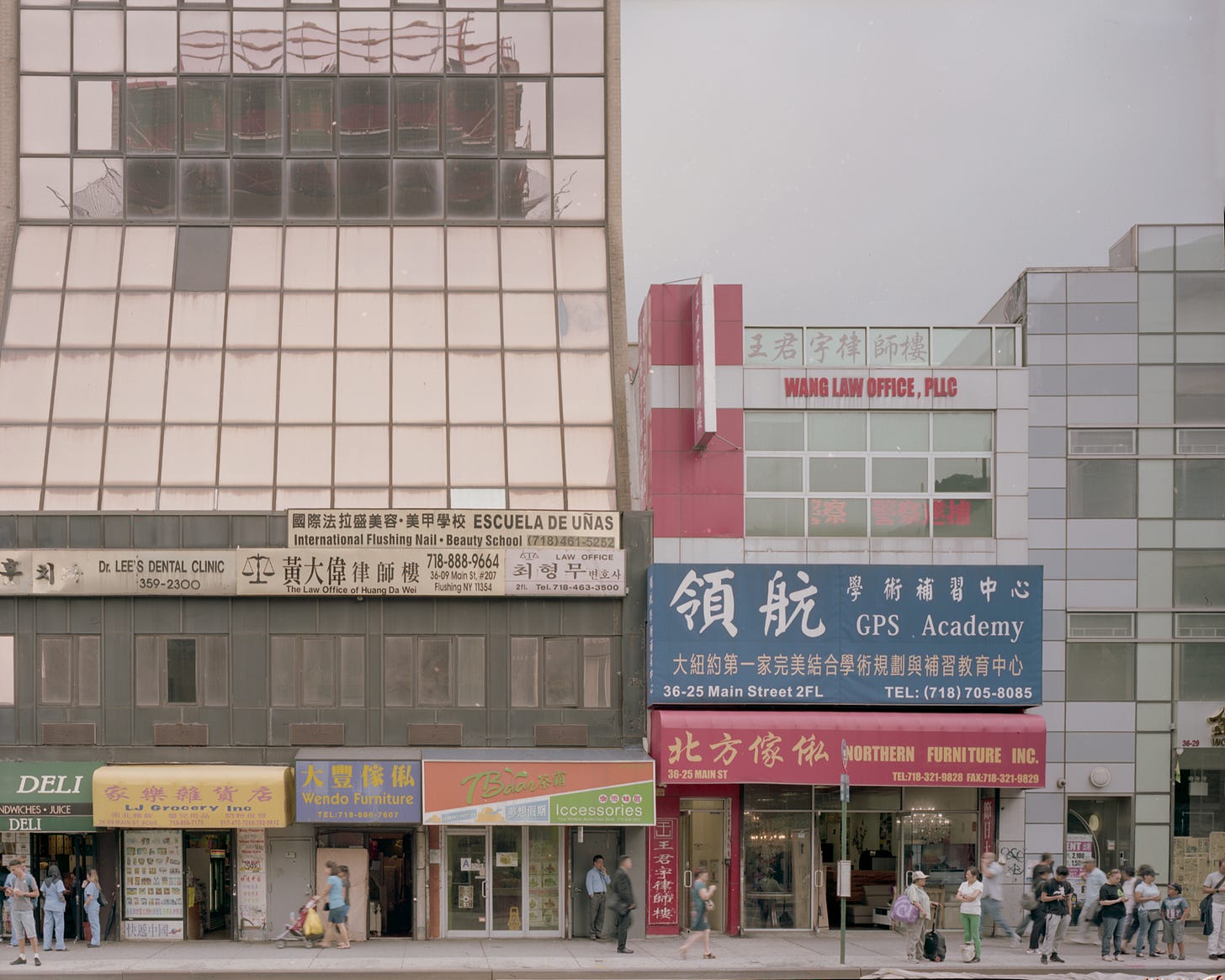
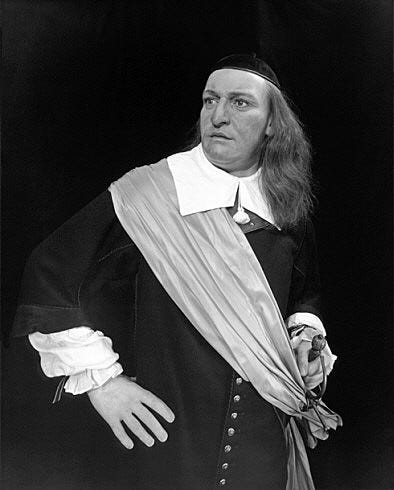
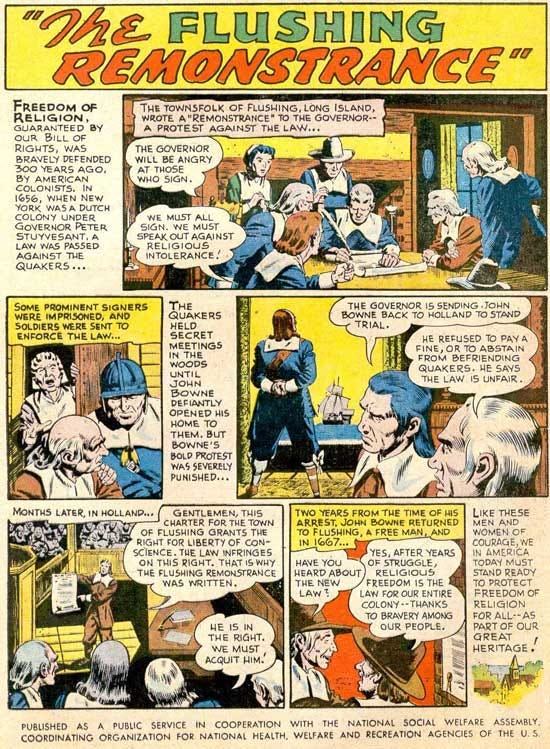
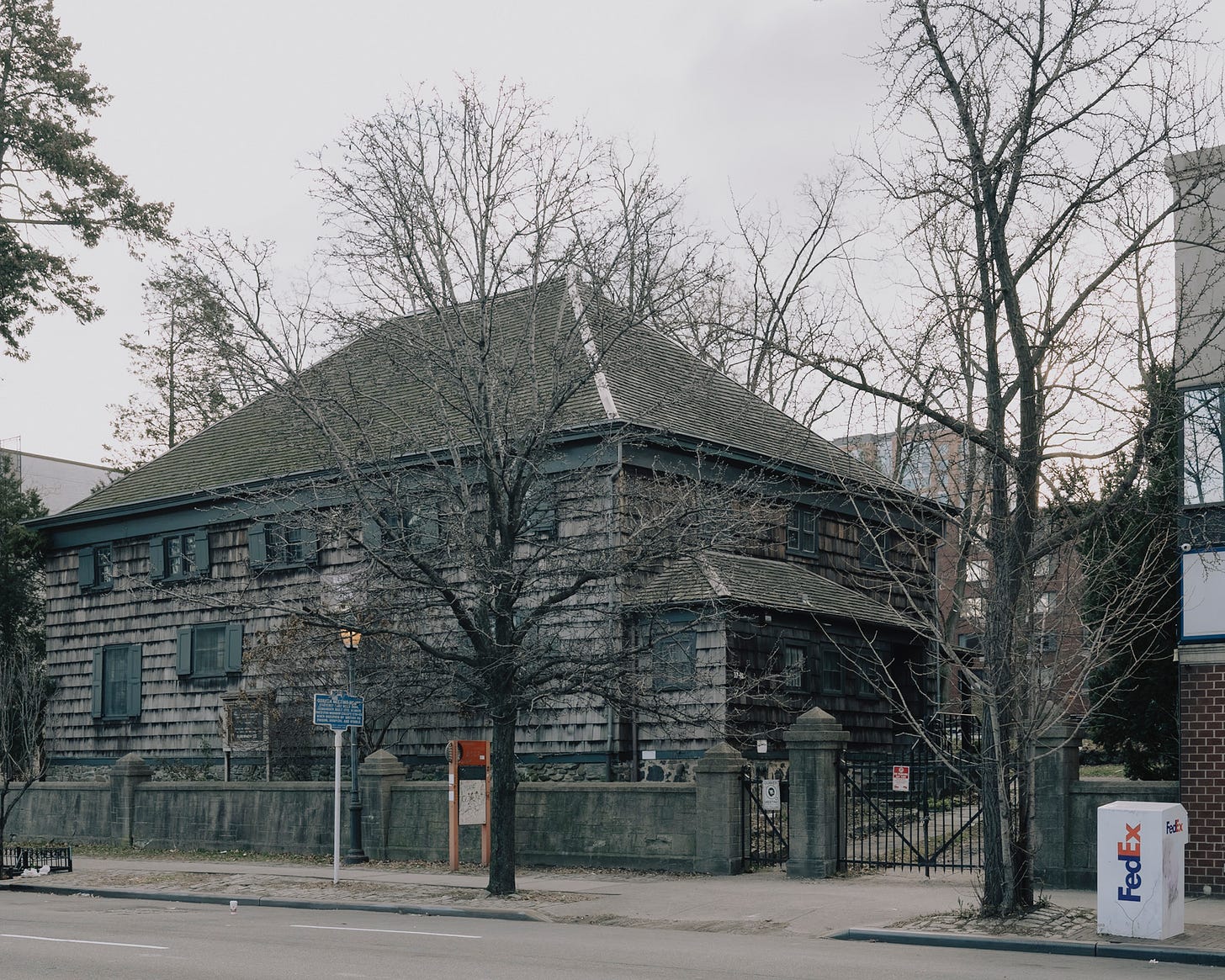
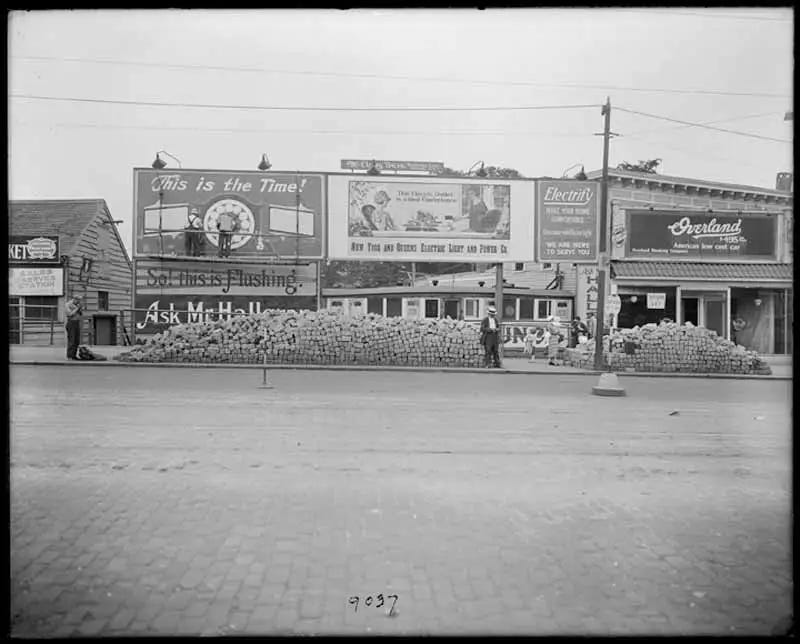
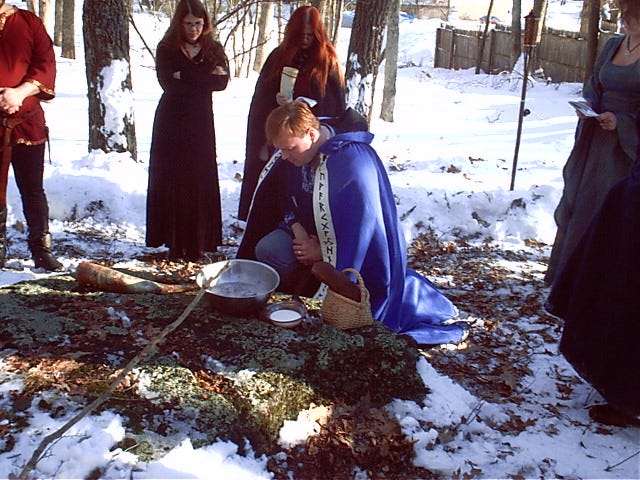
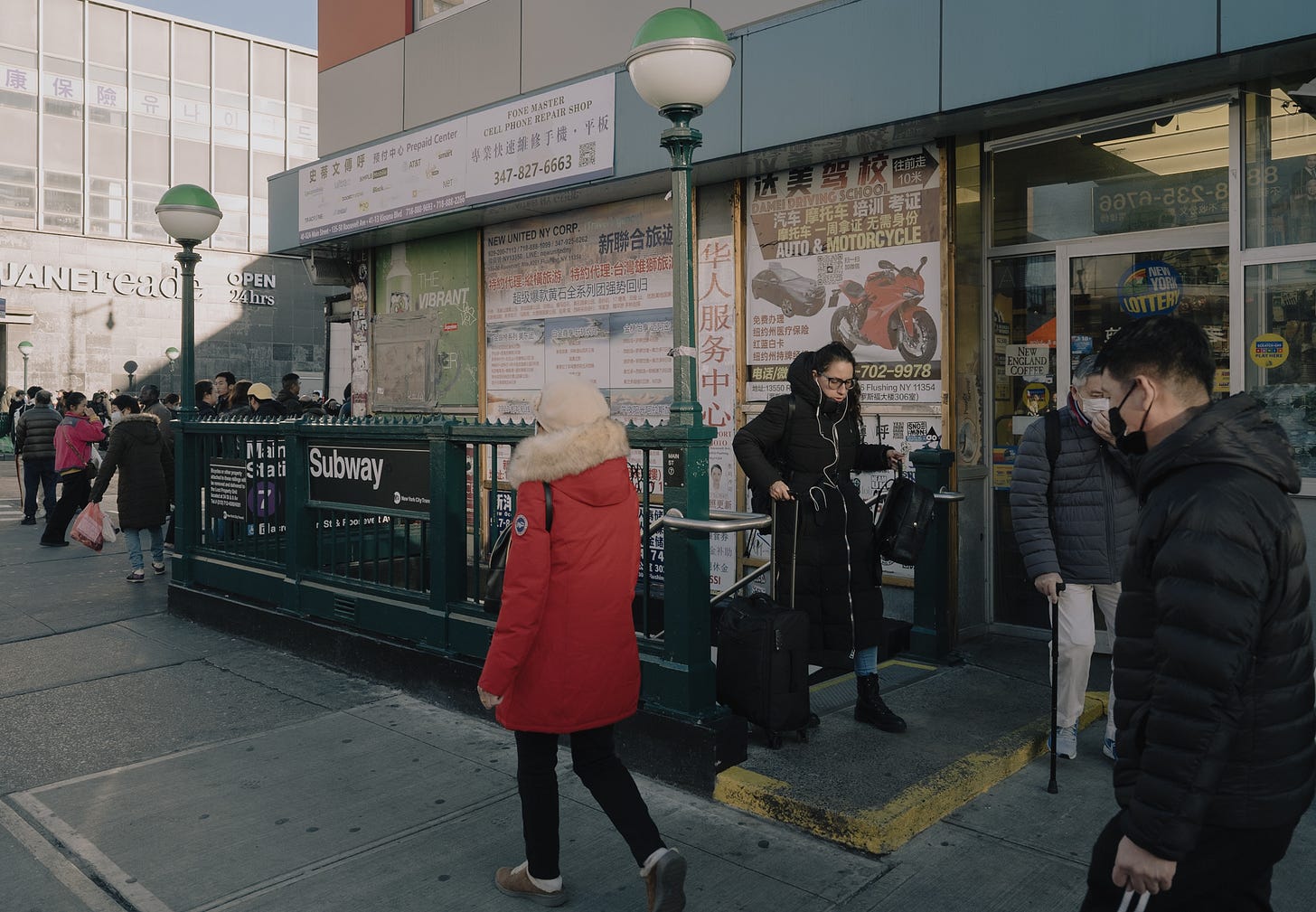

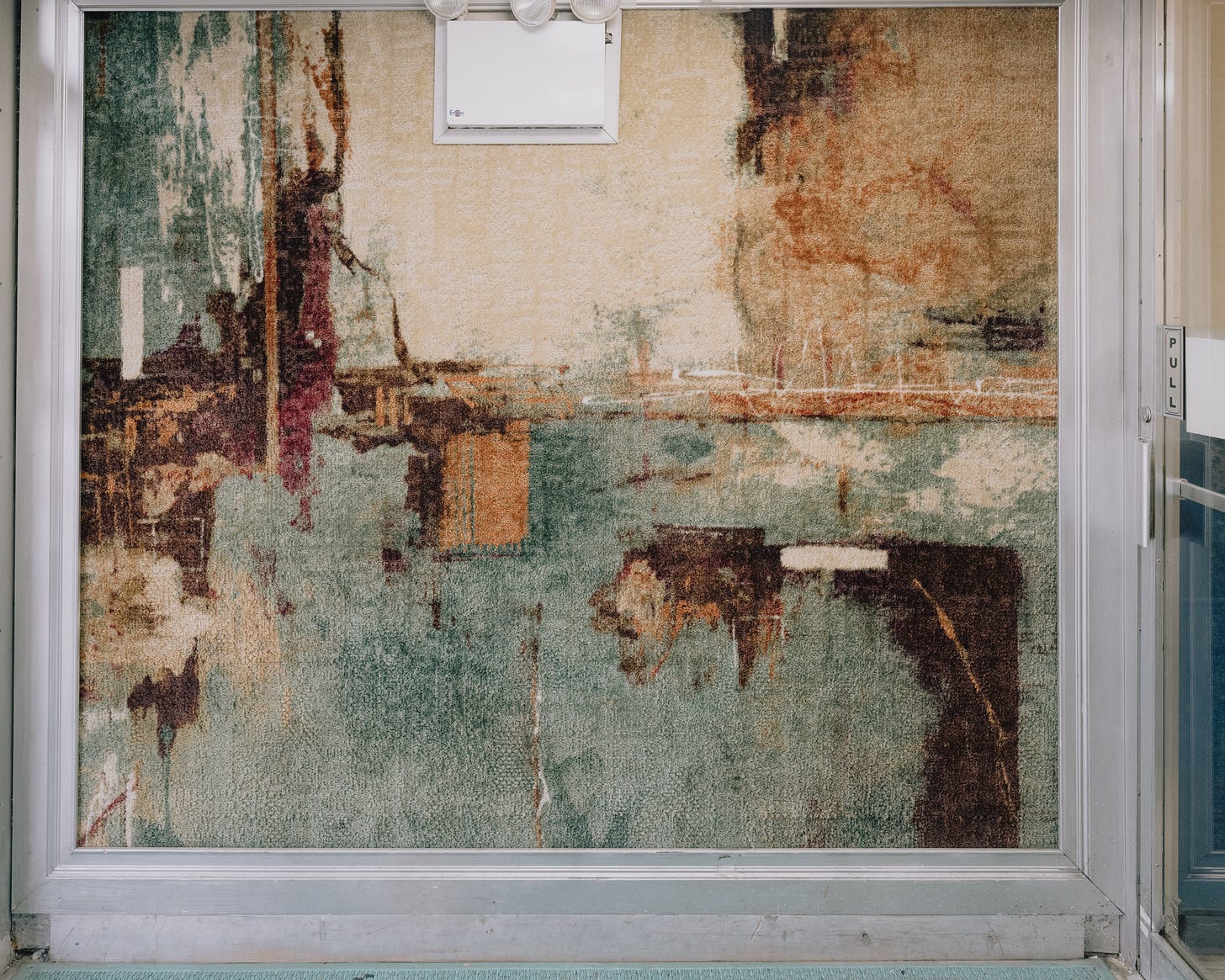
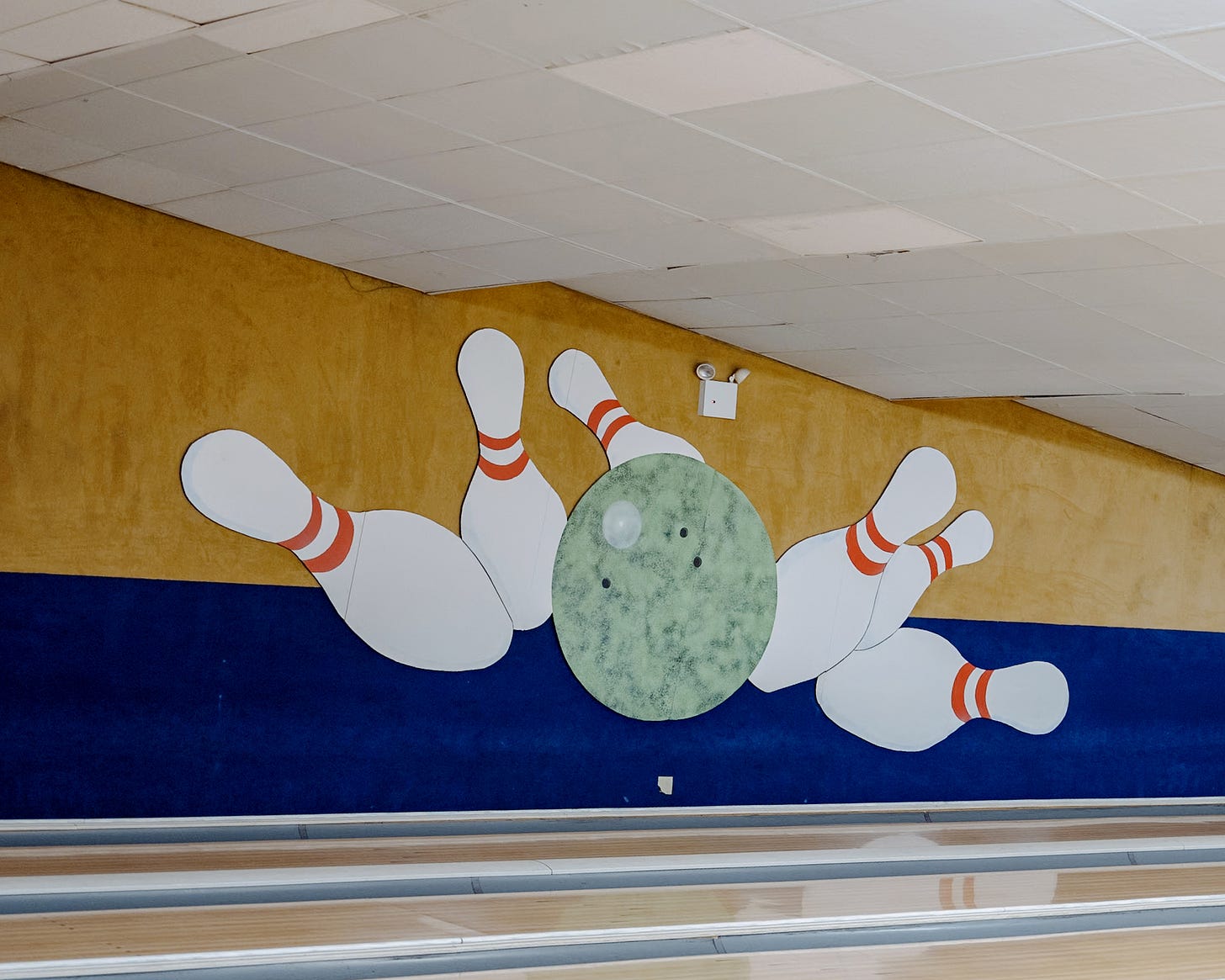
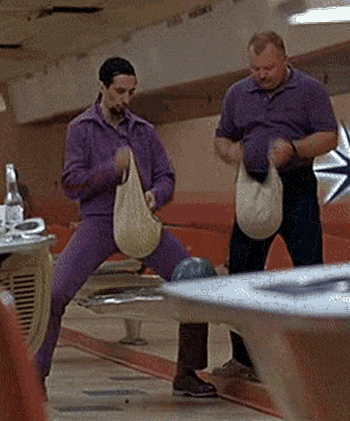
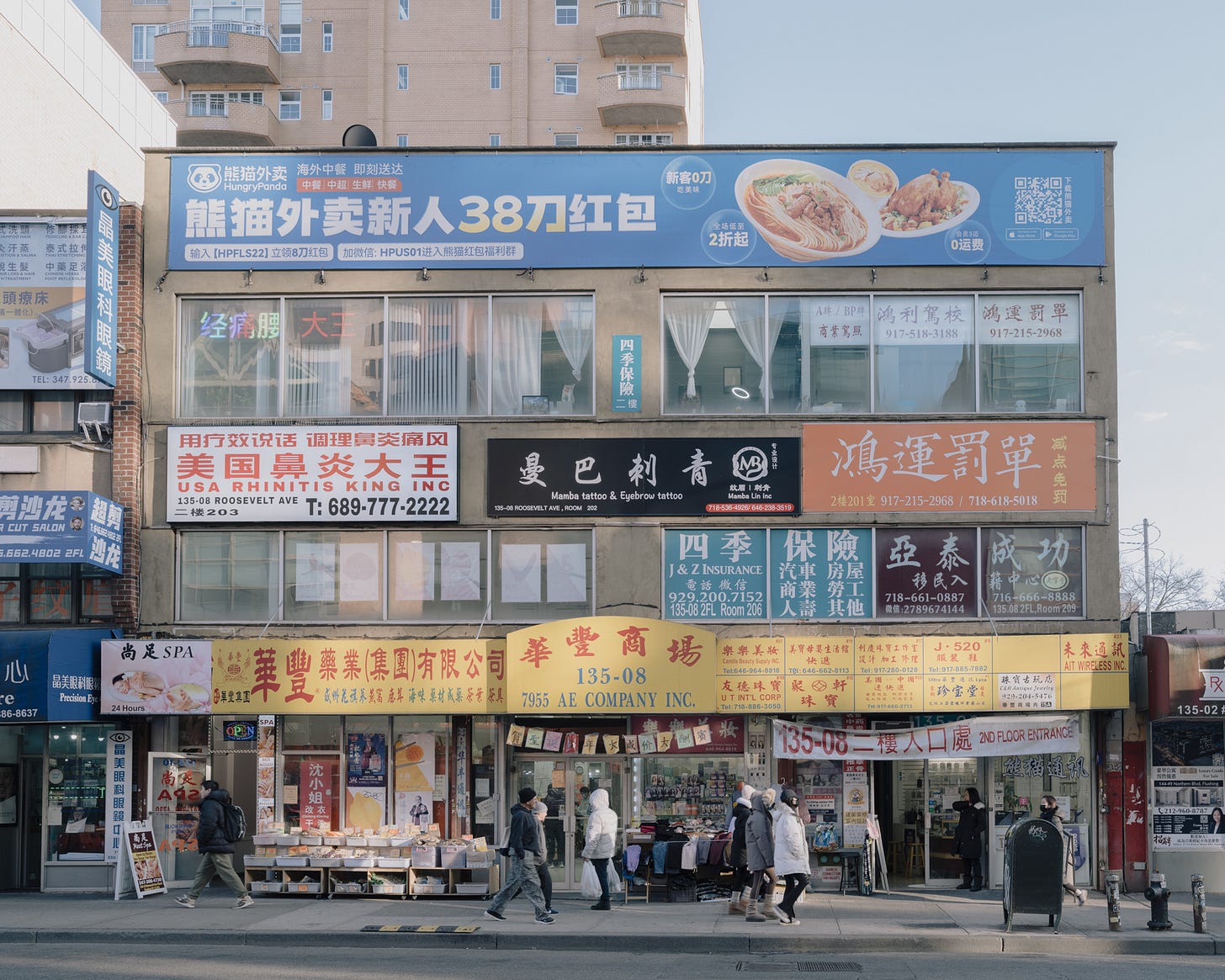
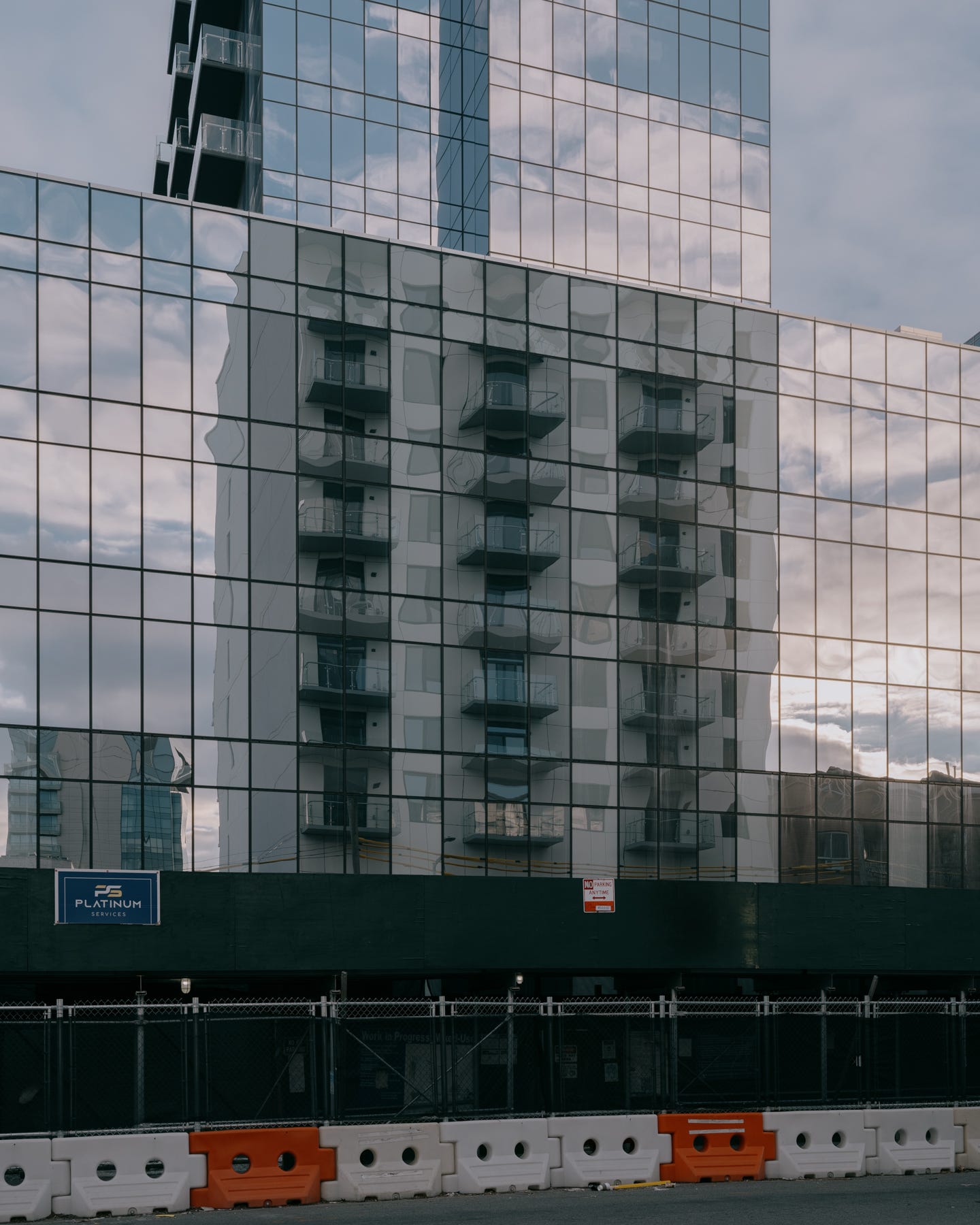

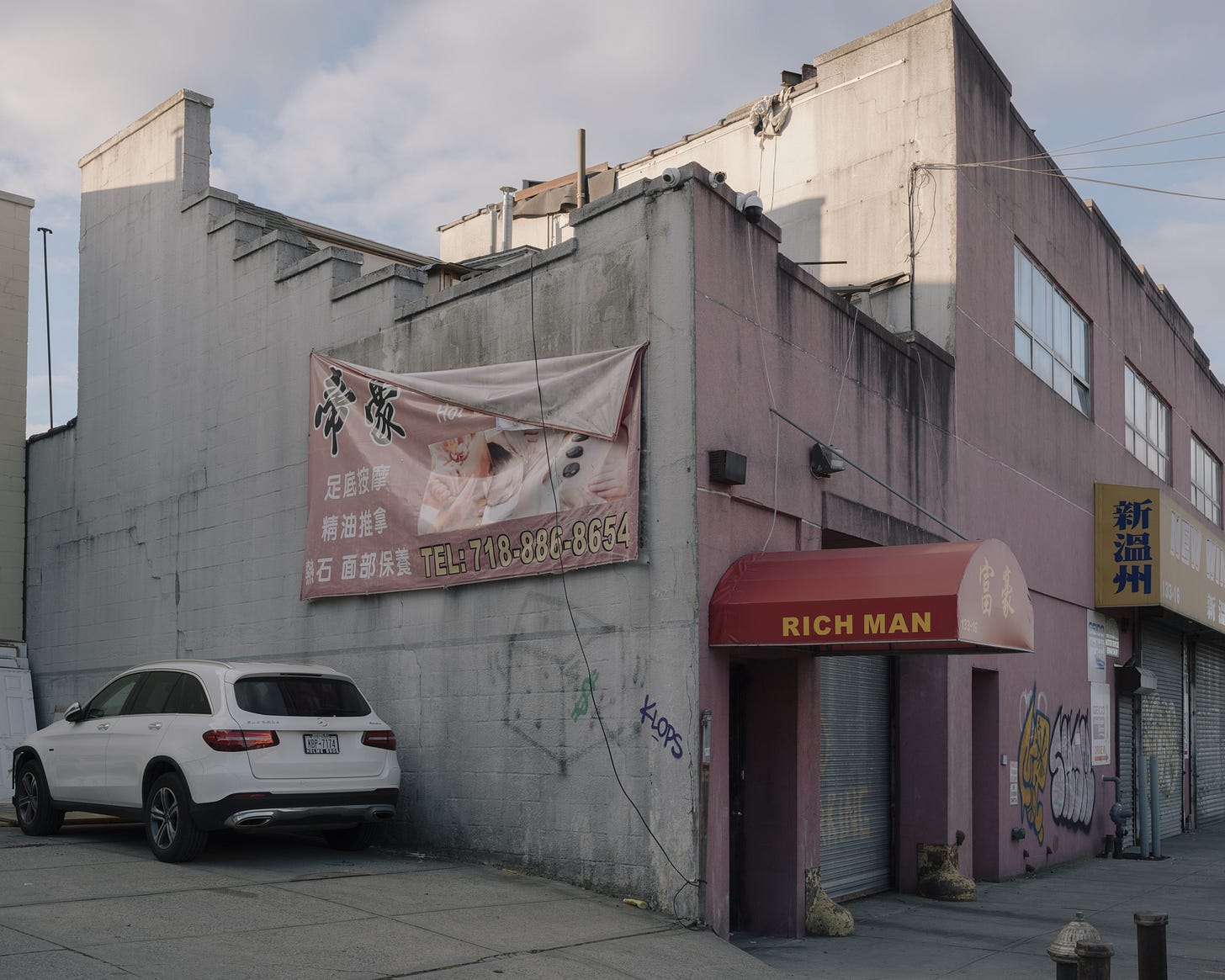
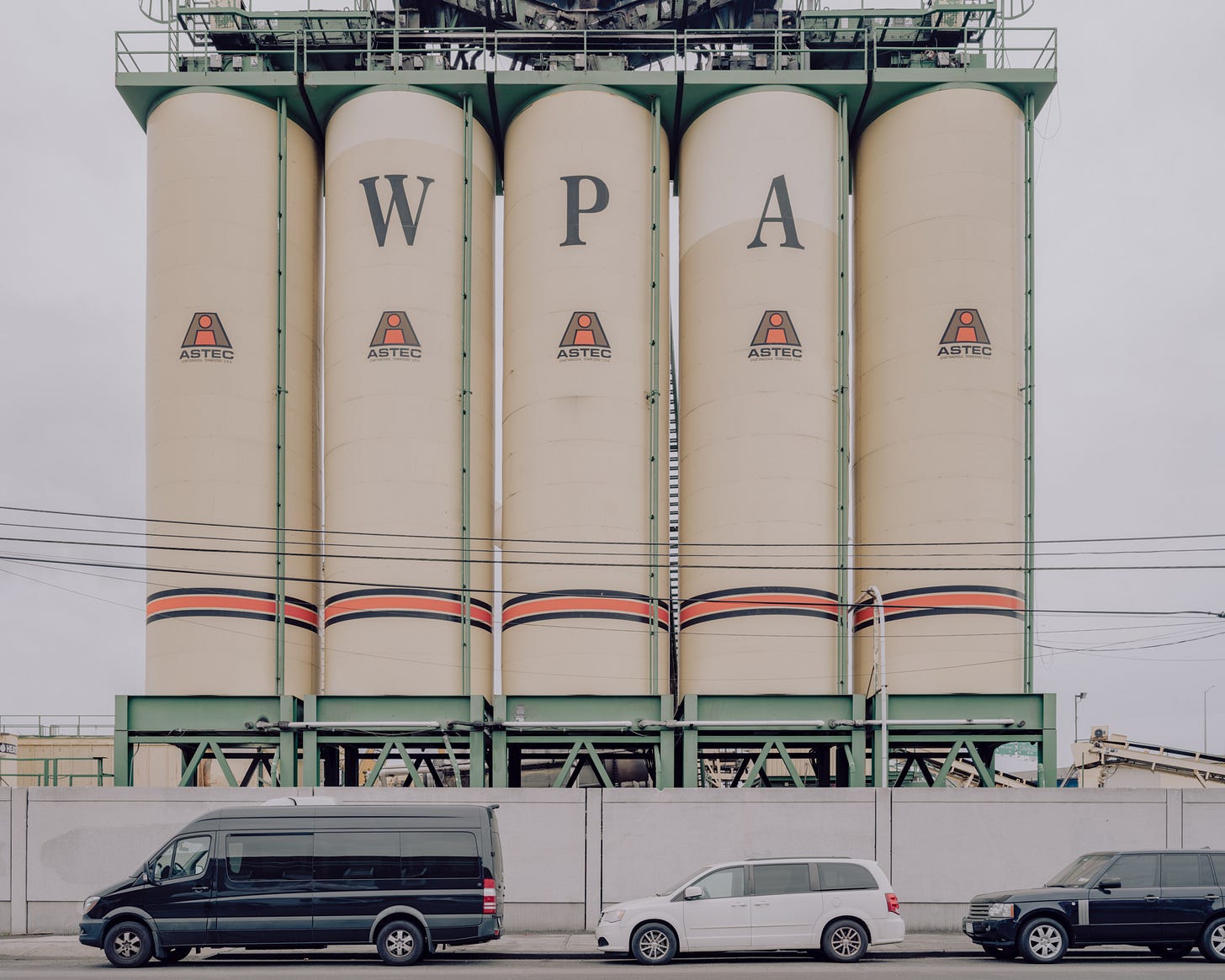

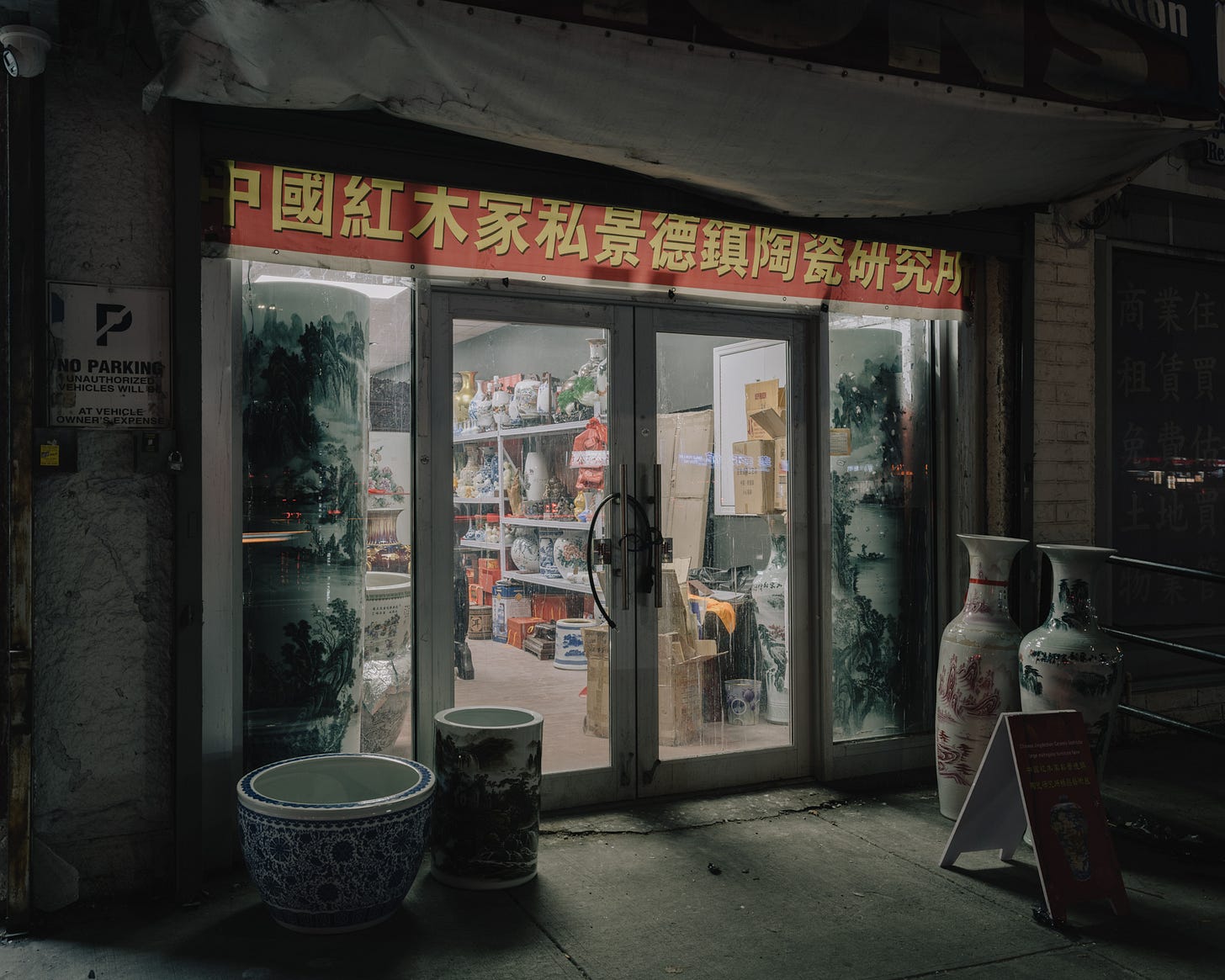
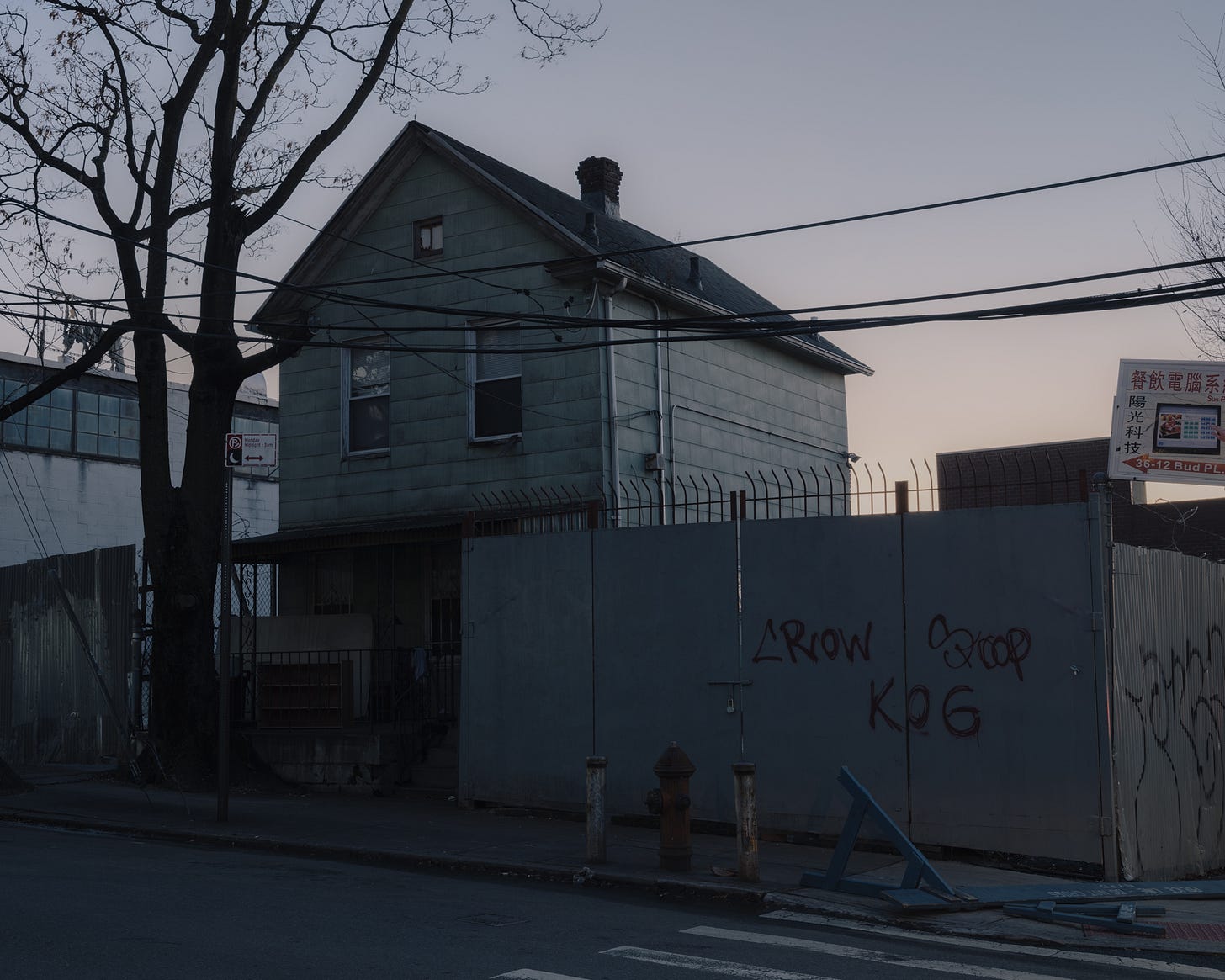
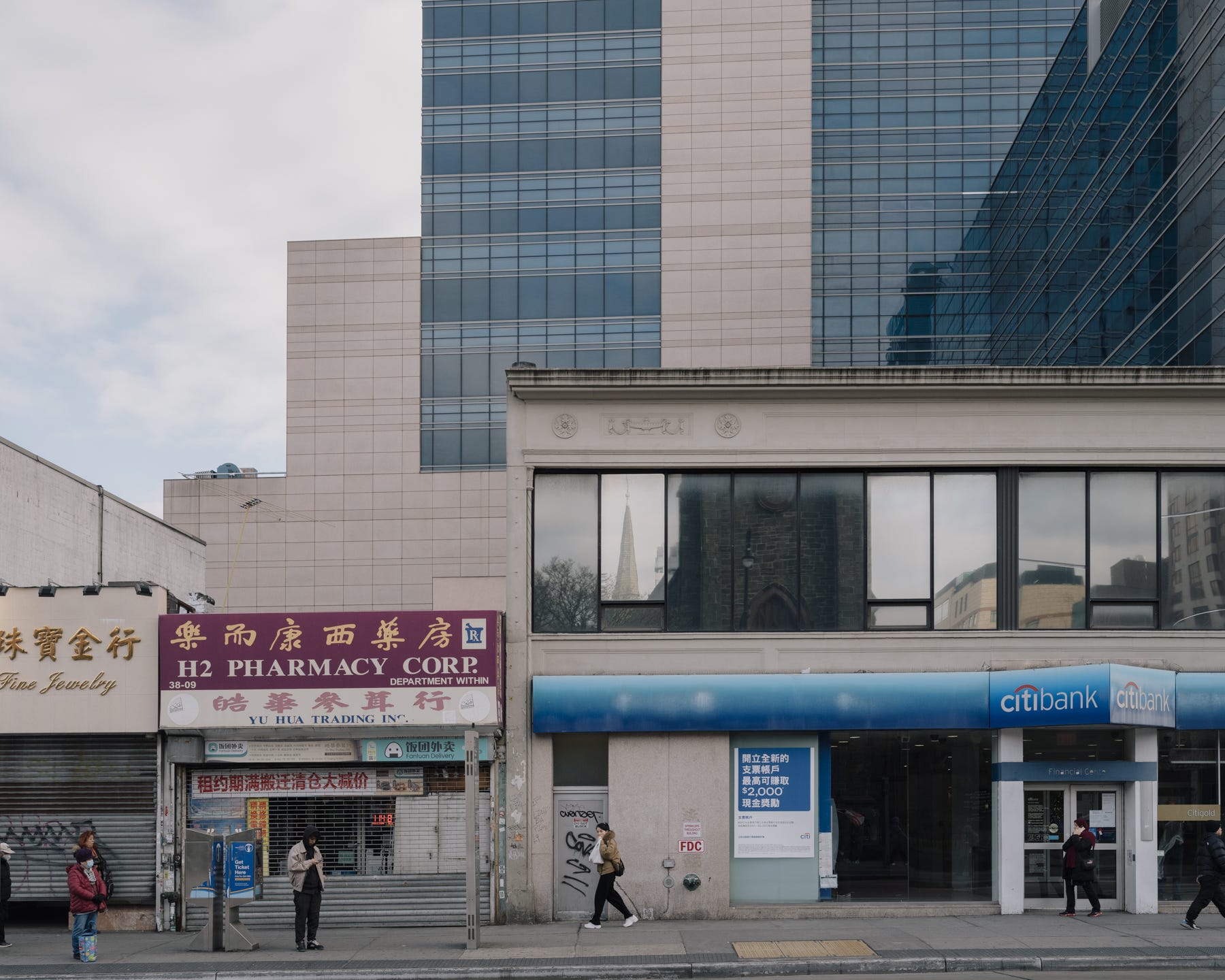

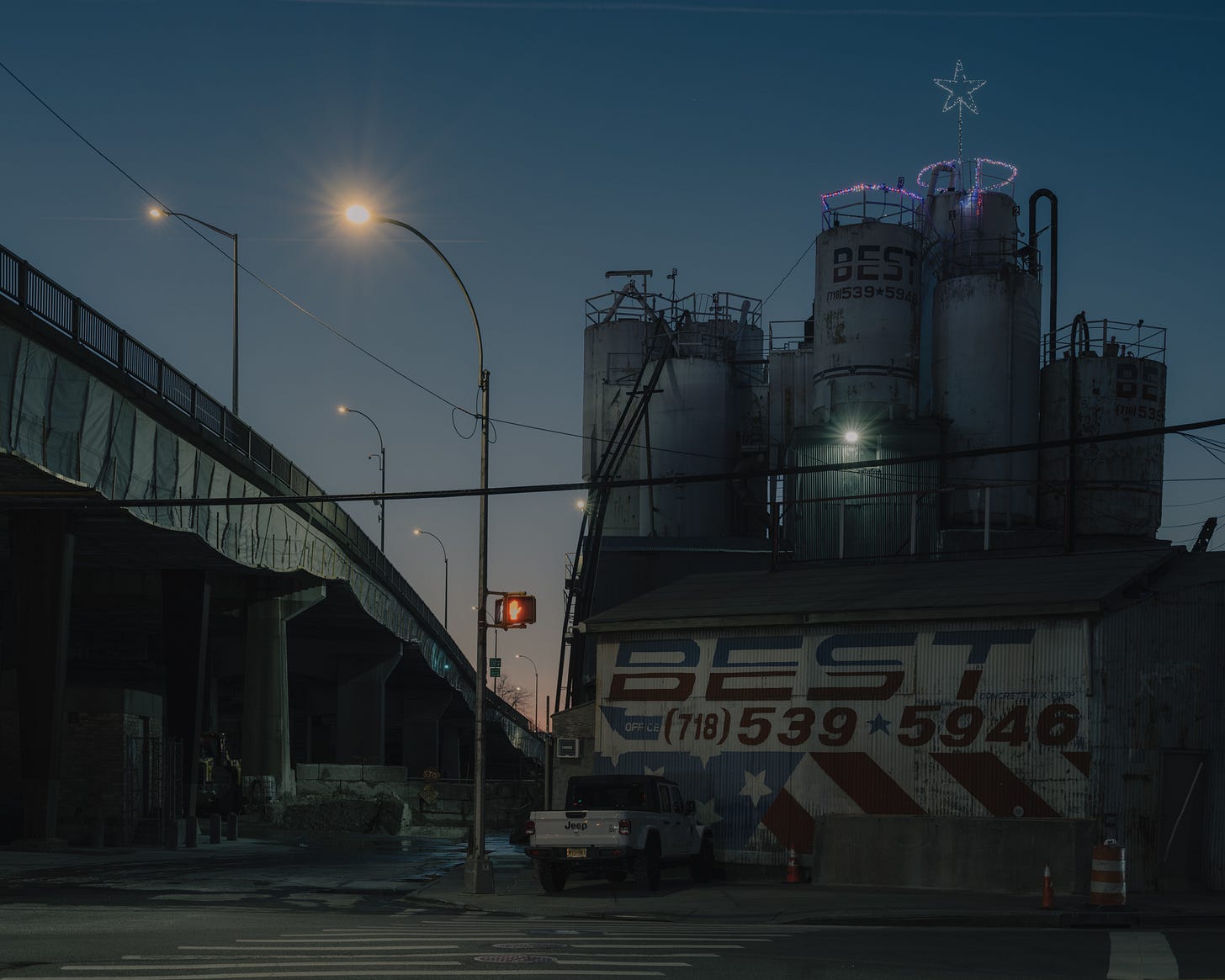
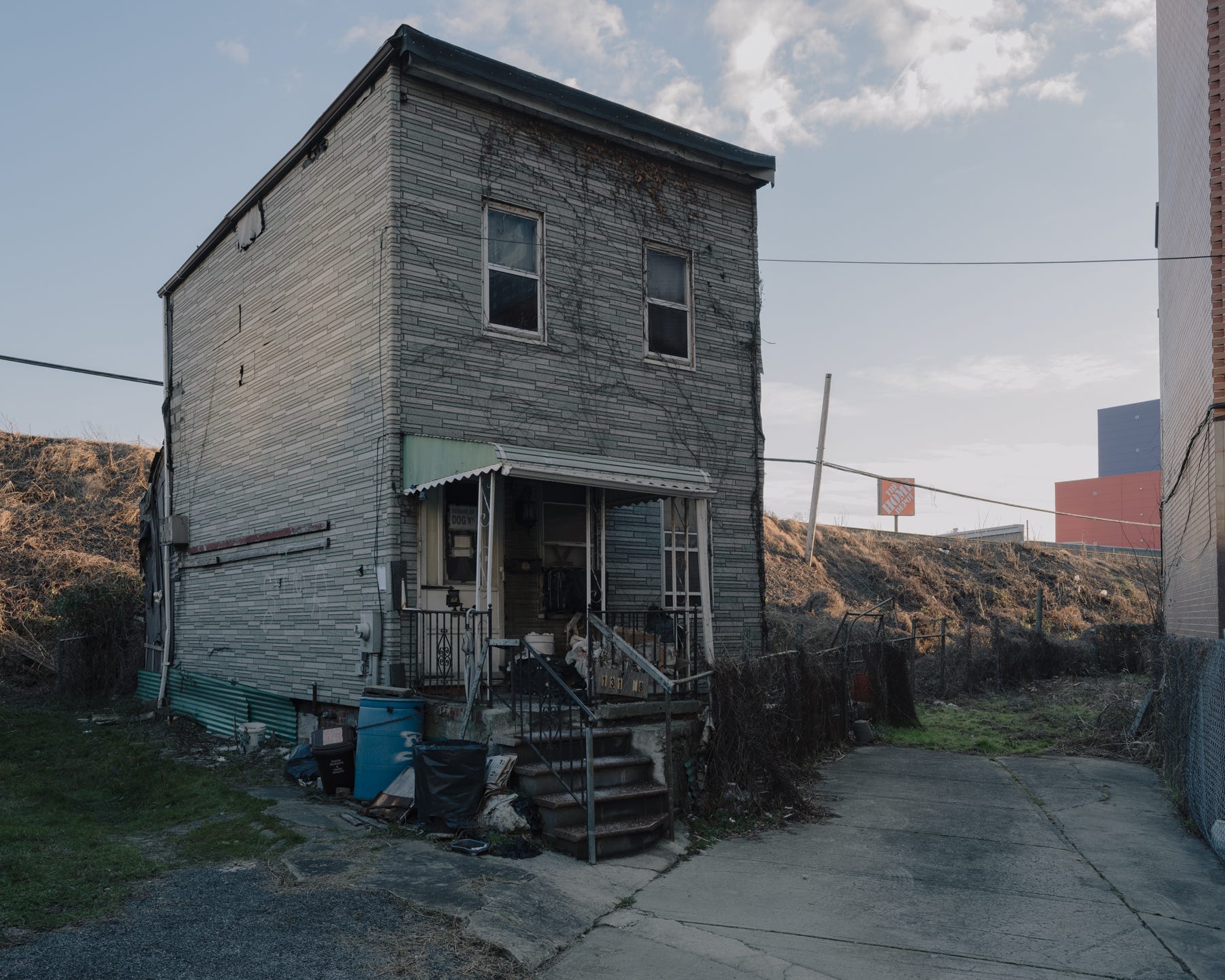

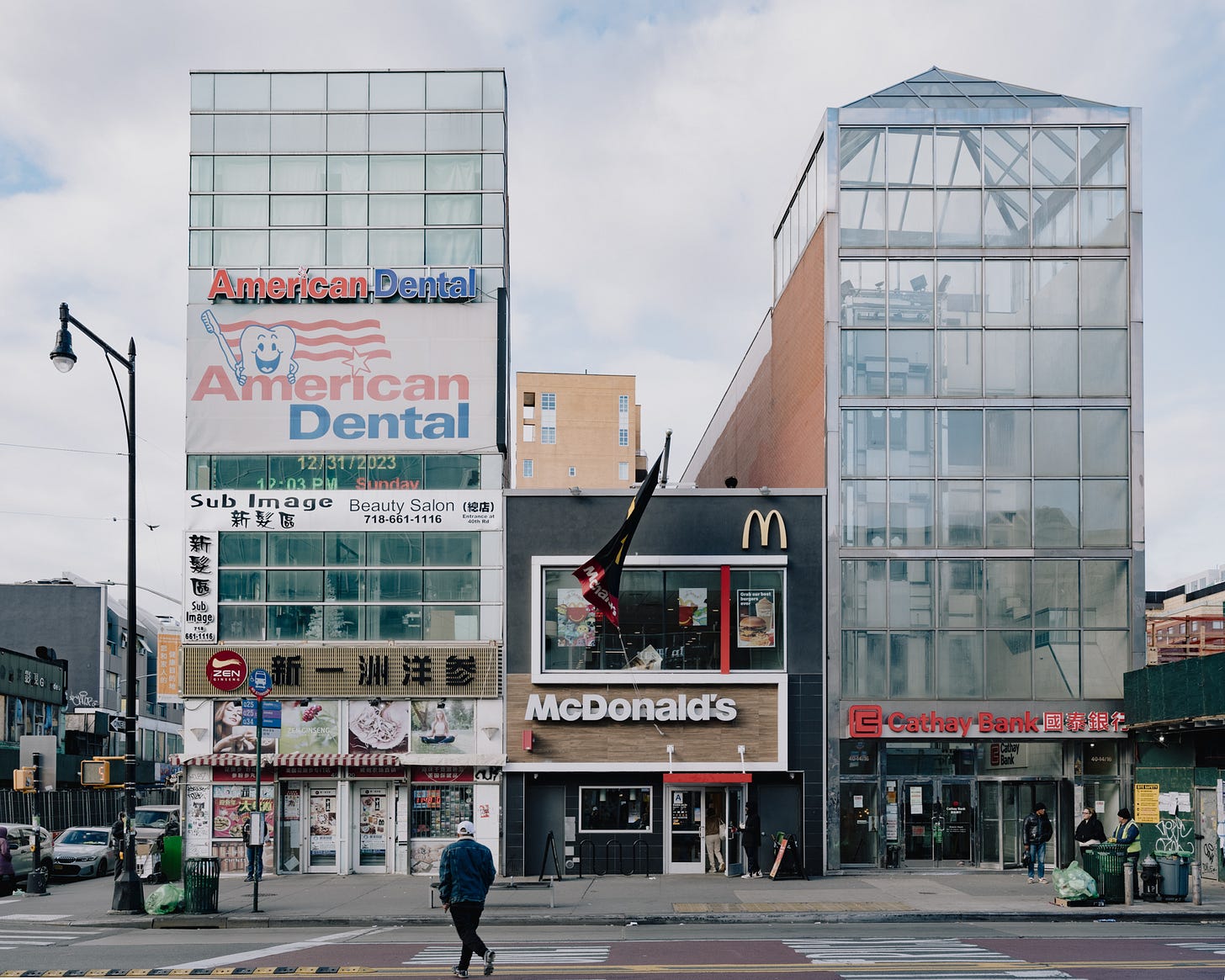
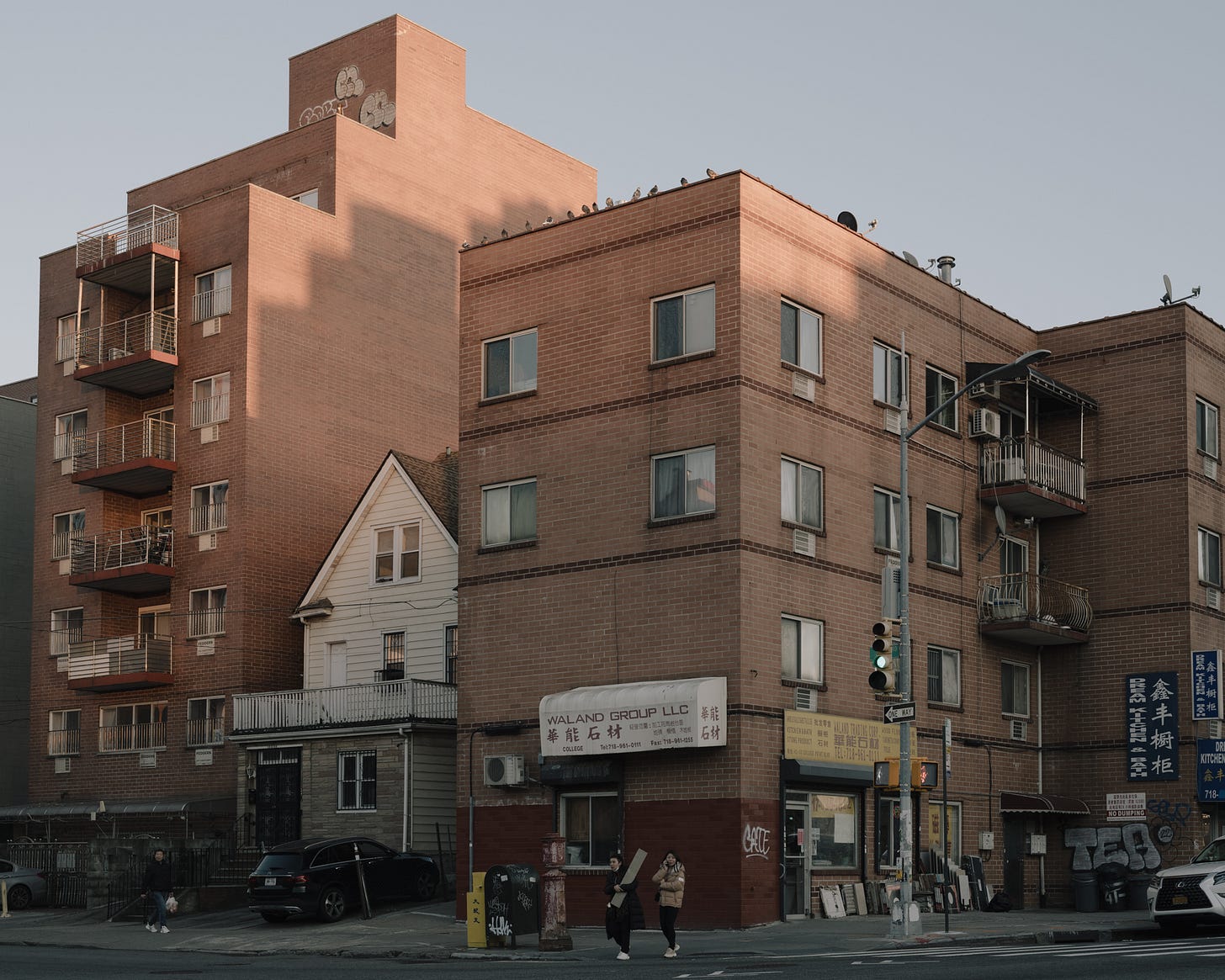
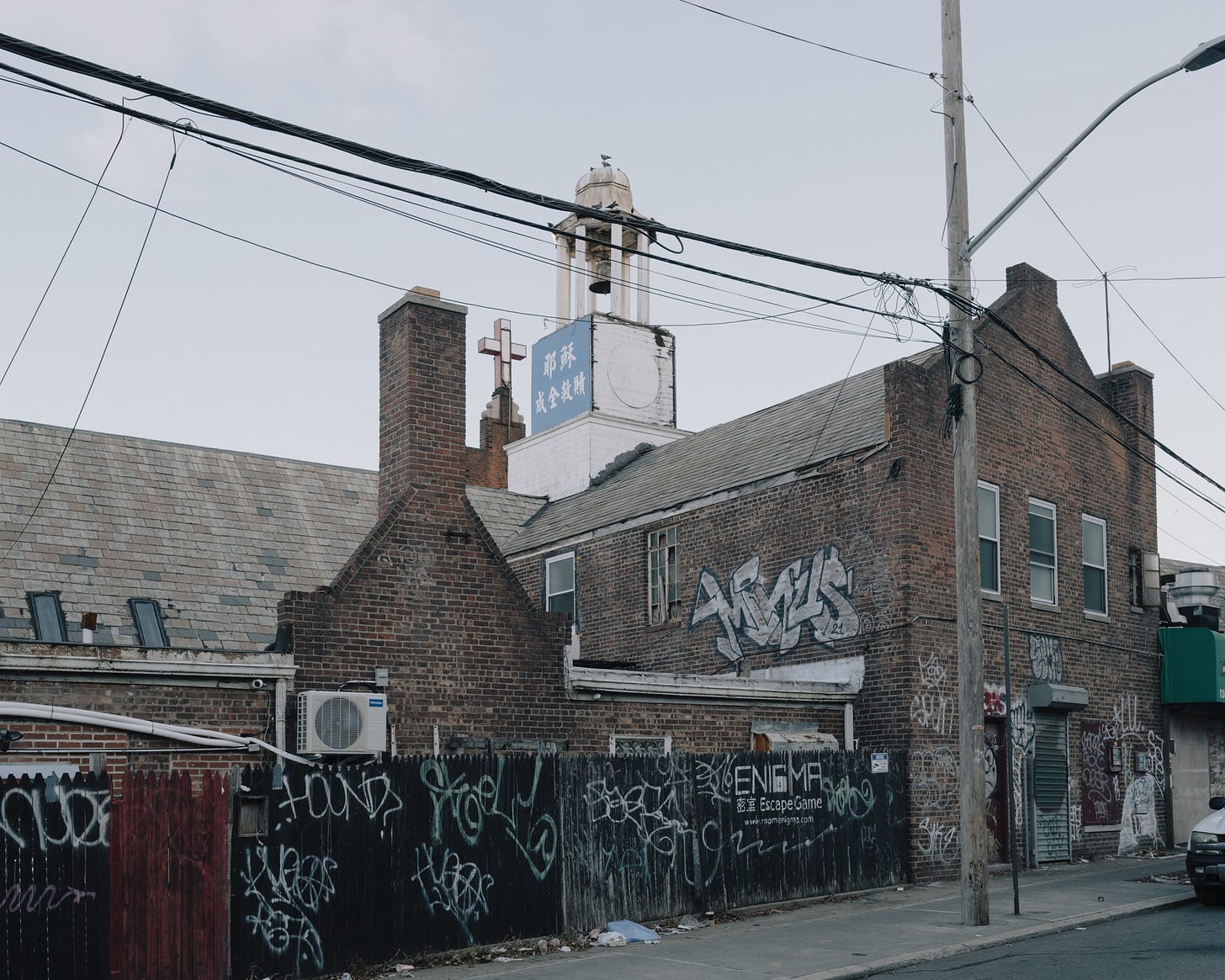
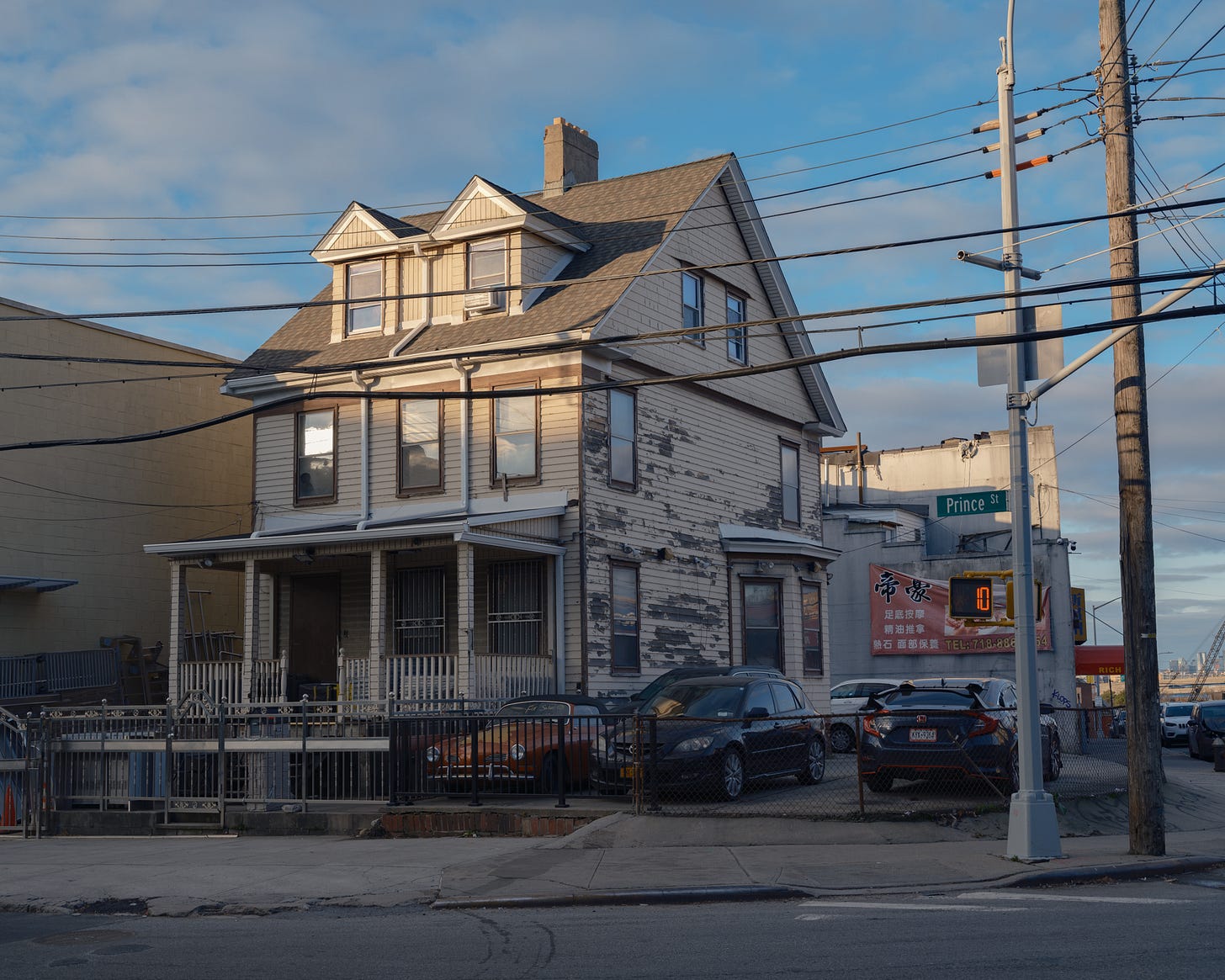
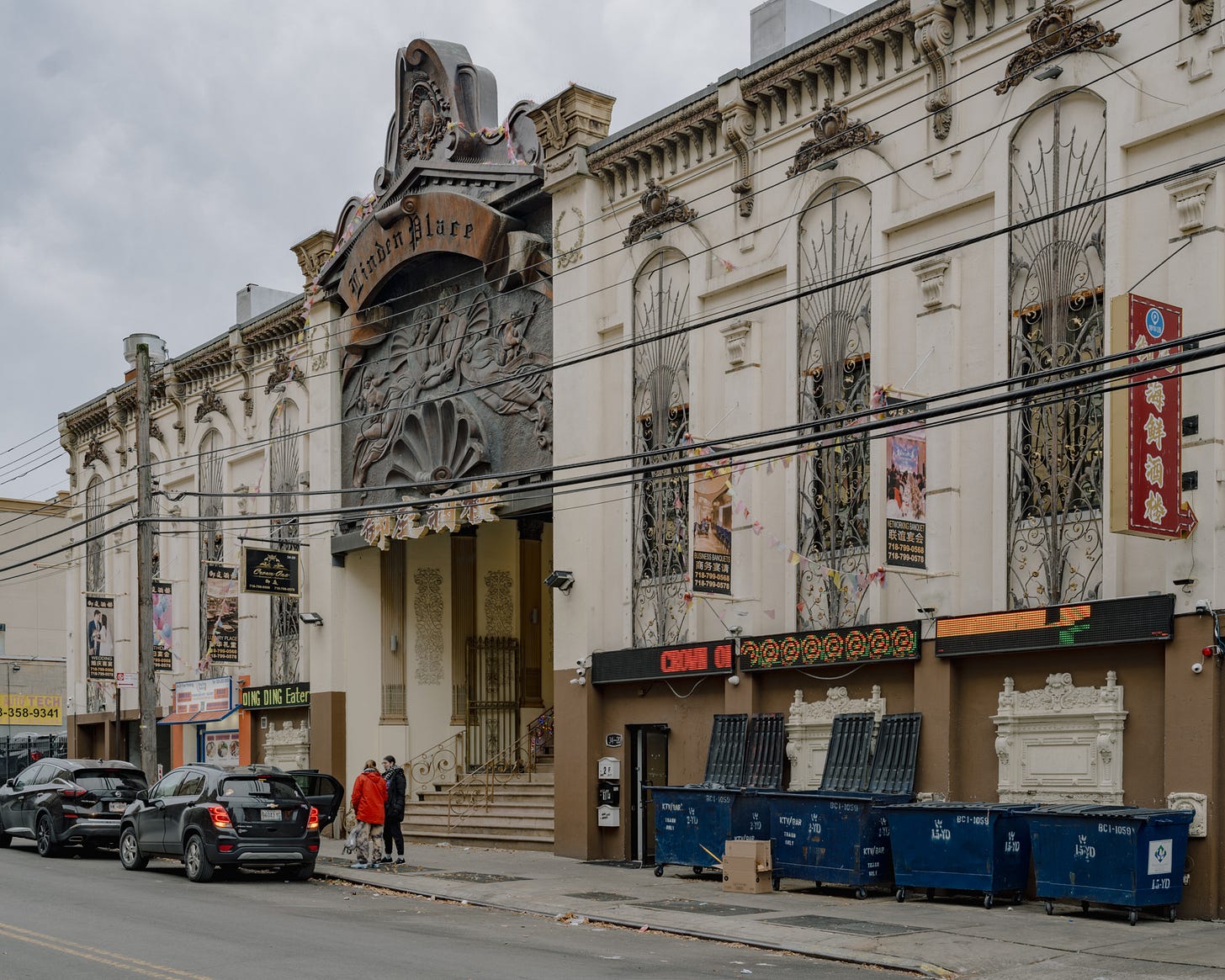
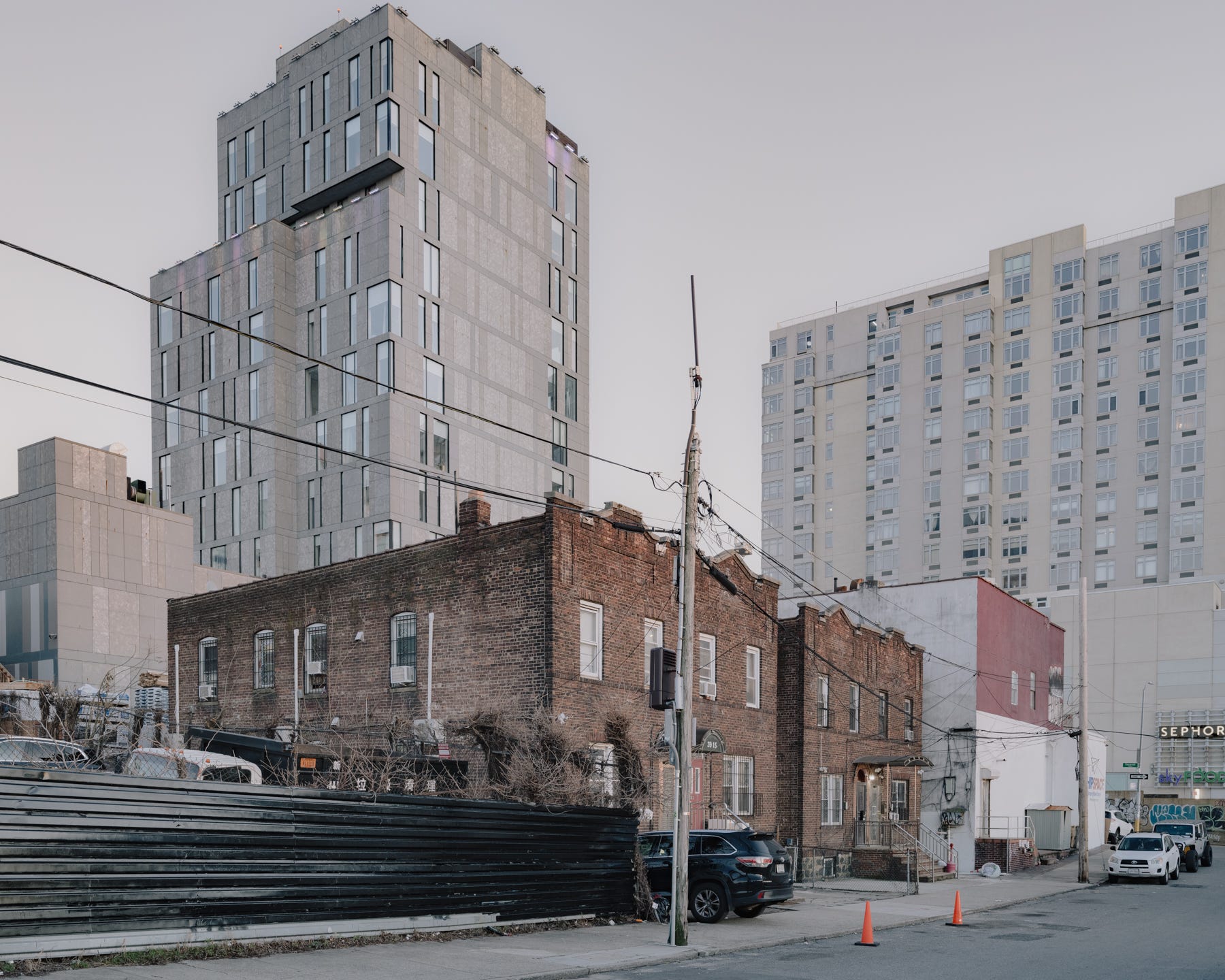
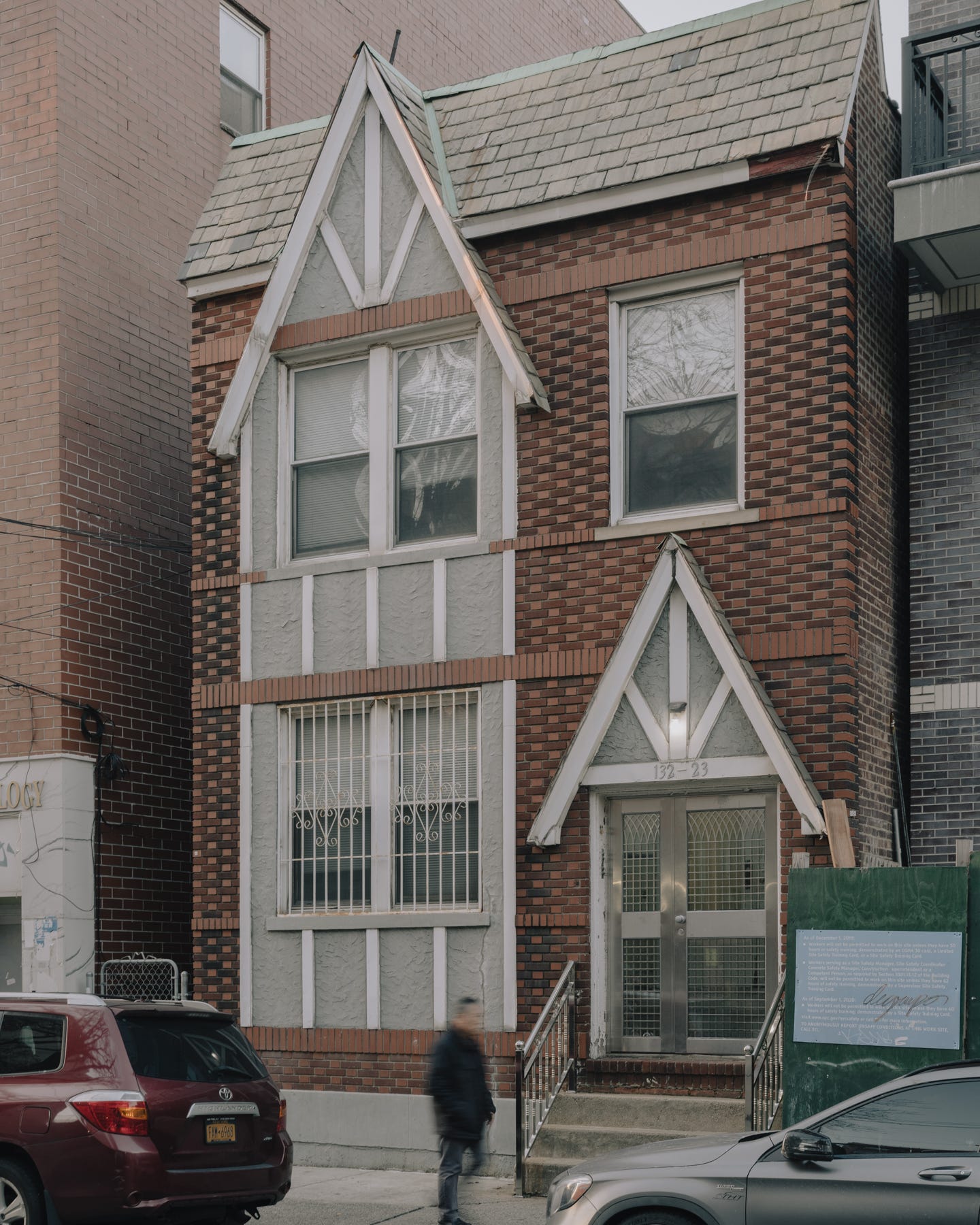
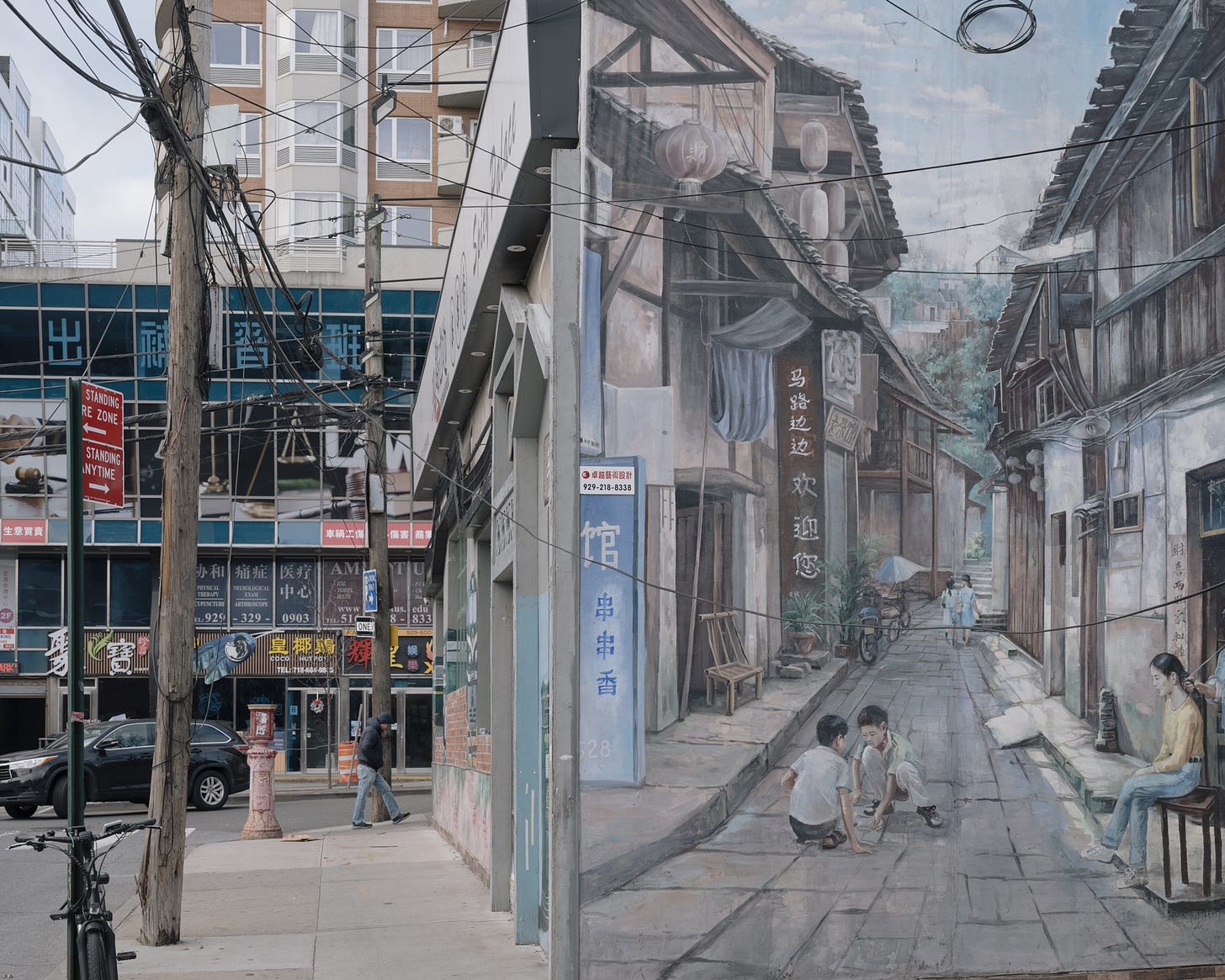
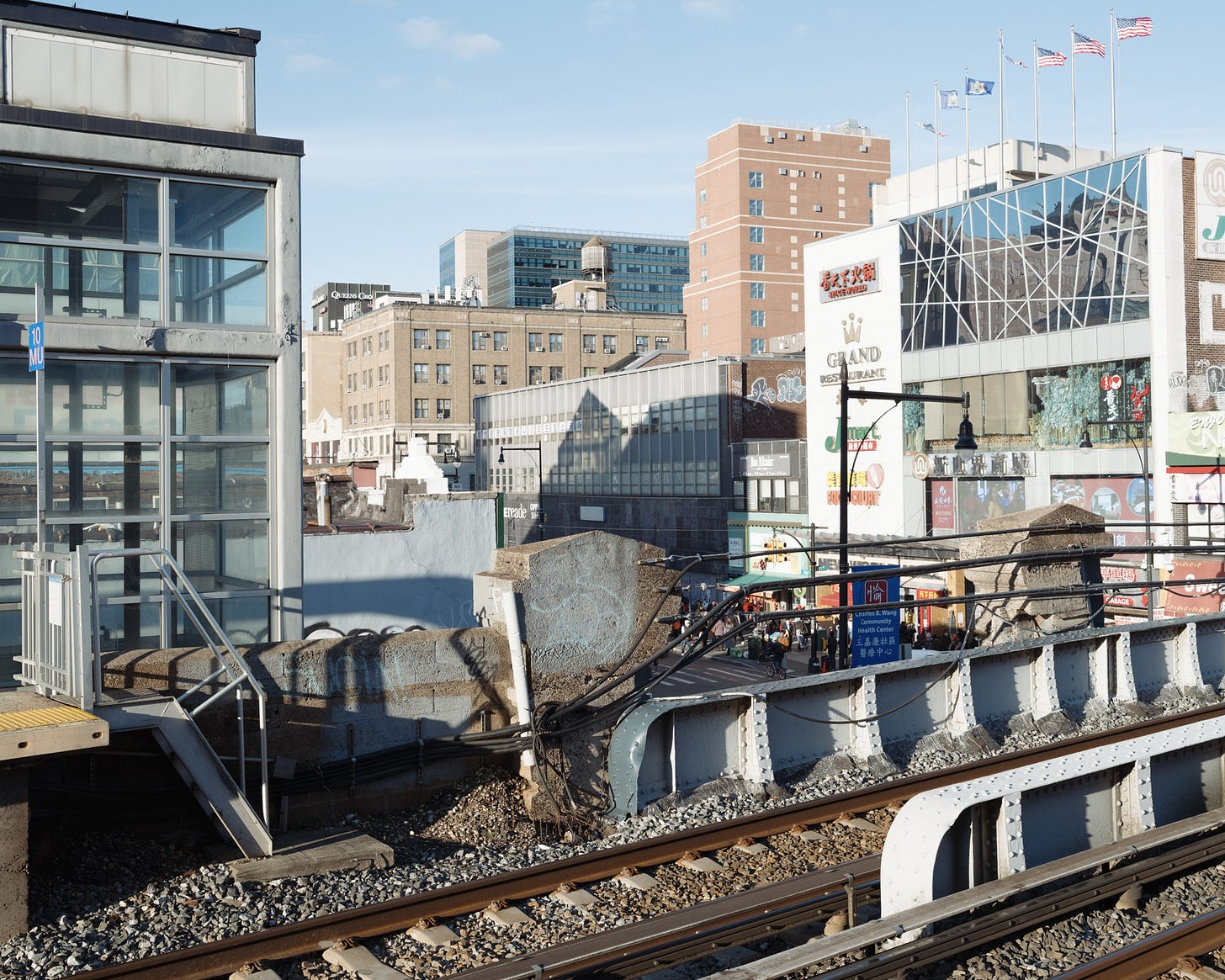
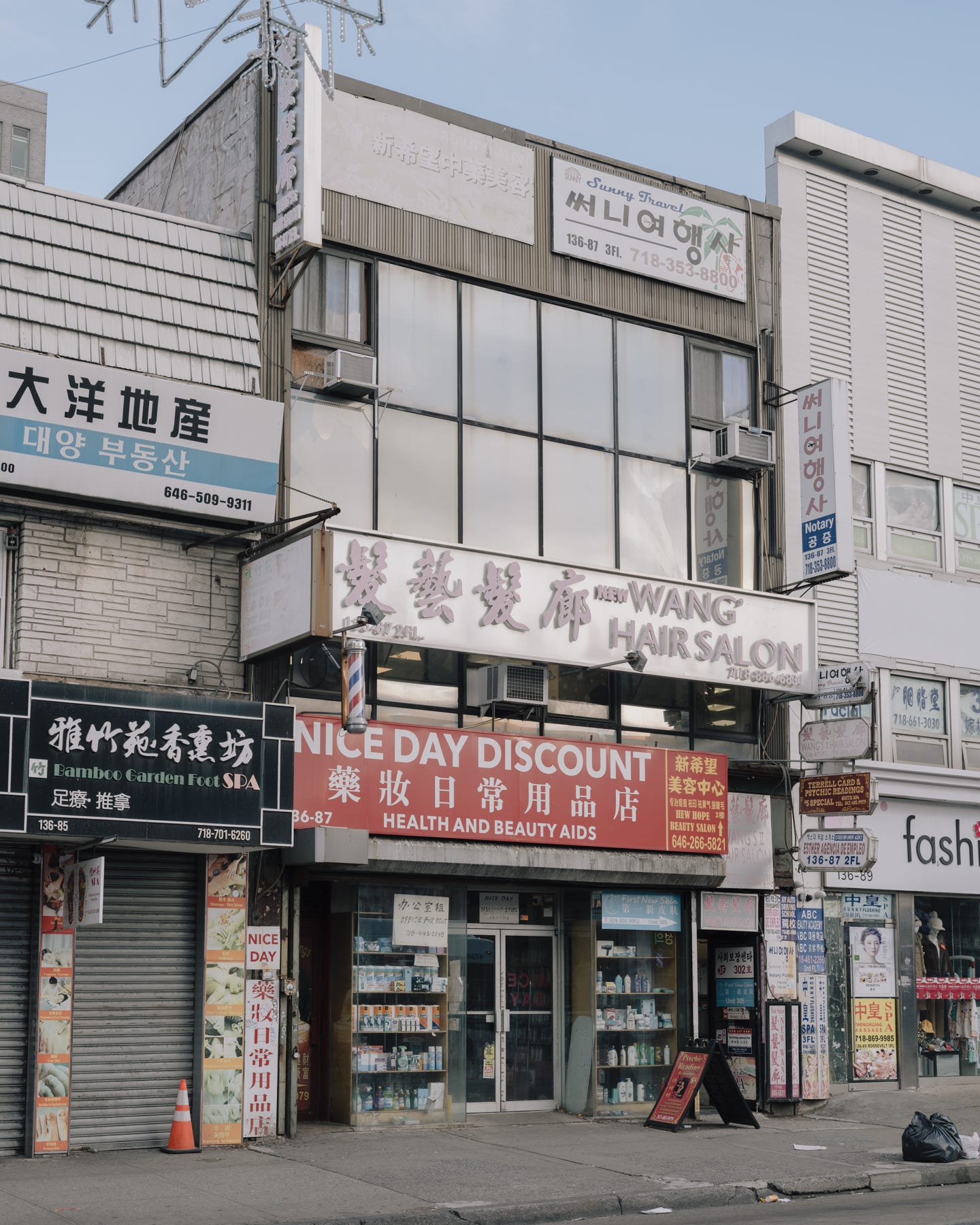
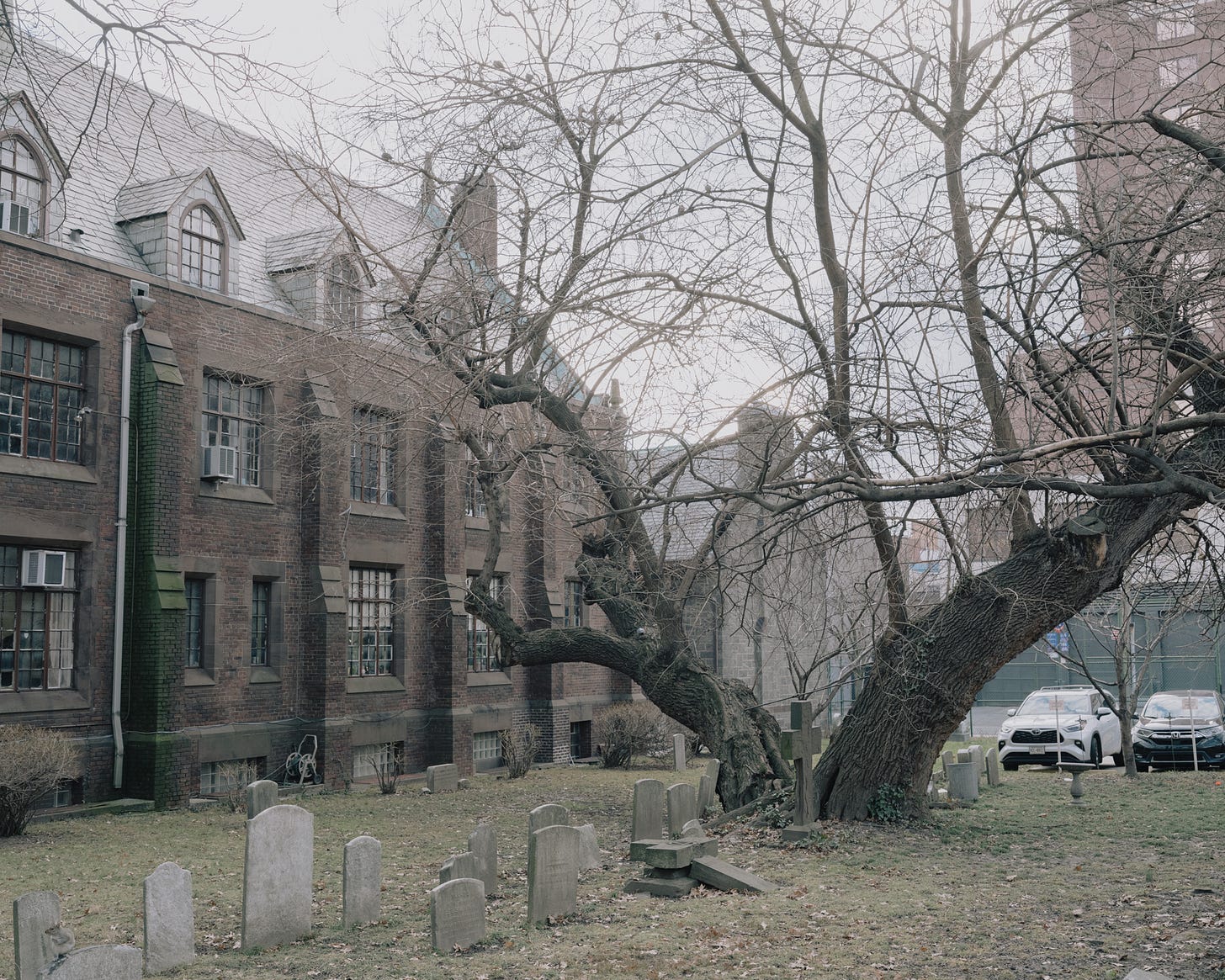
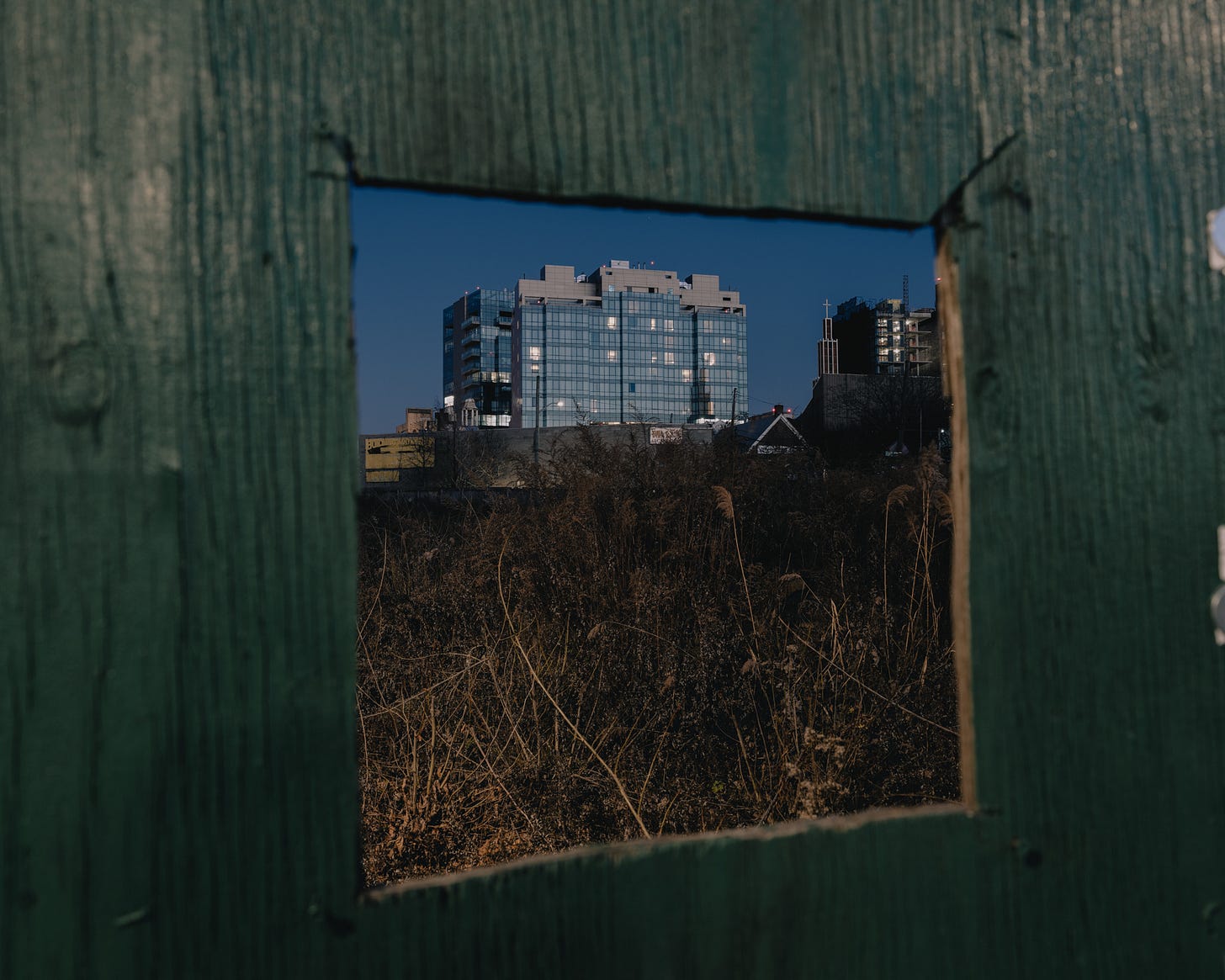
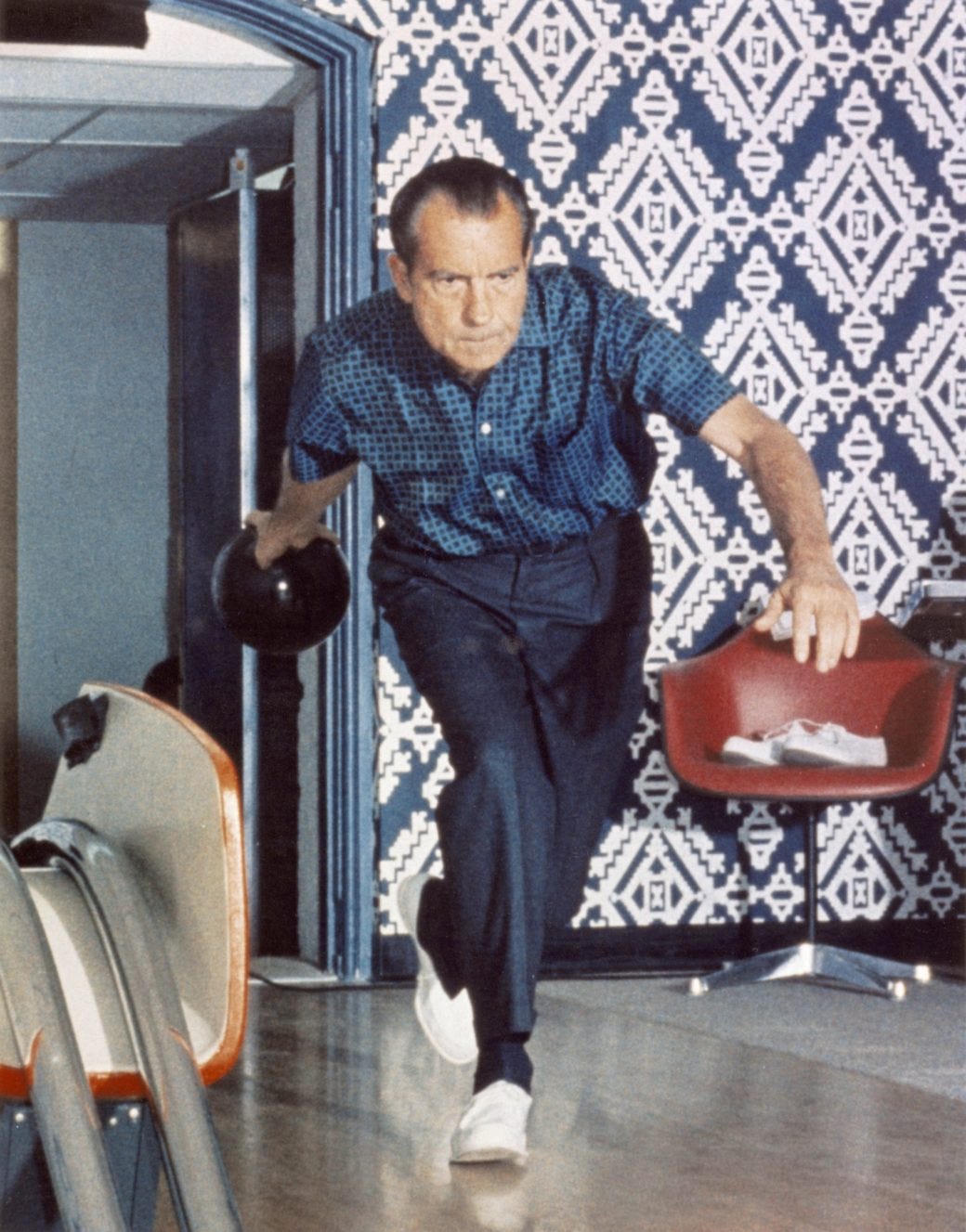
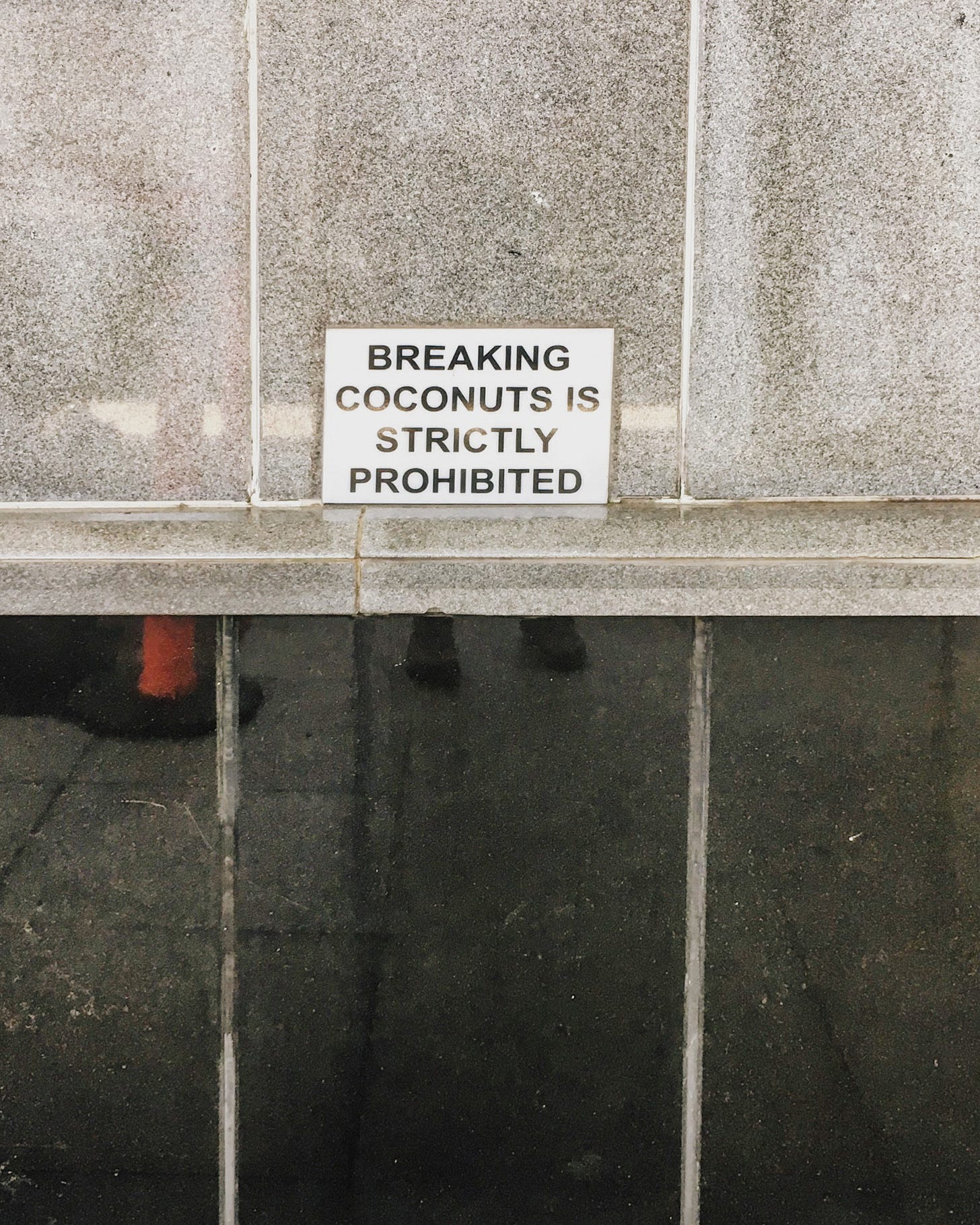
OMG I’ve GOT to profile Dan Halloran!
Fascinating post! Enjoyed all of it ... especially the capture of the plane flying over the storage units! Great history also! I know nothing of Flushing except that The Nanny (Fran Drescher) used to mention it for a laugh every once in a while. Thanks for this great post!